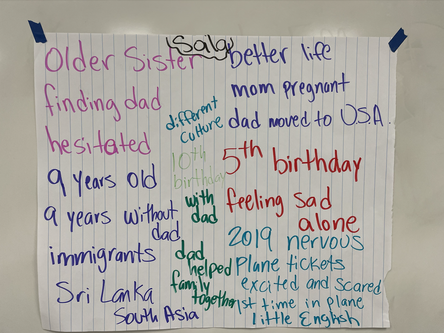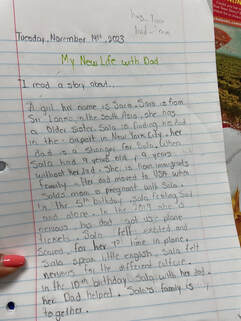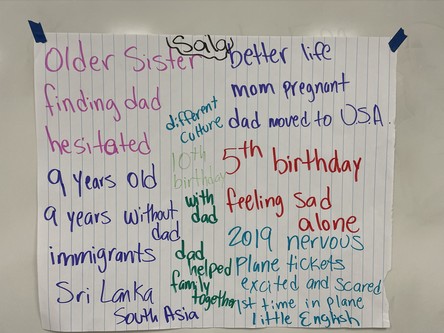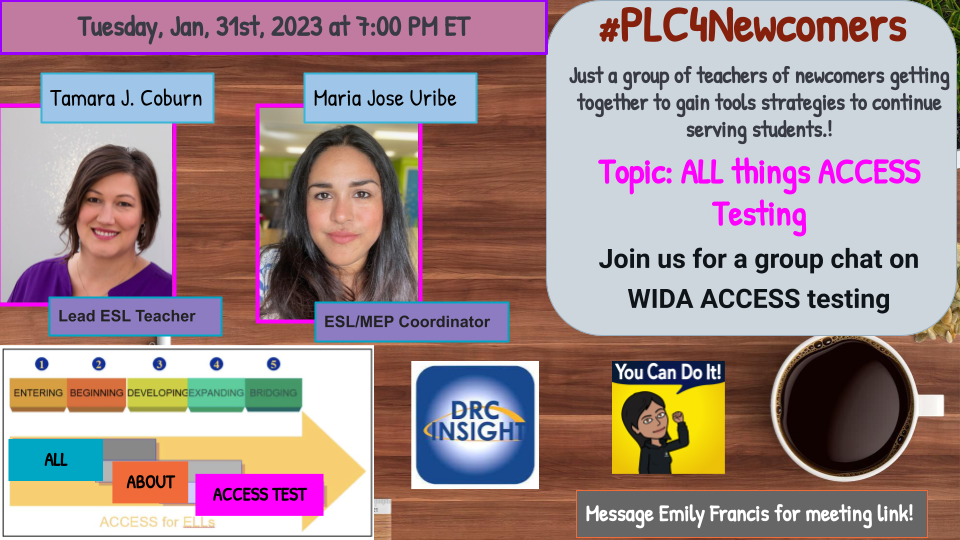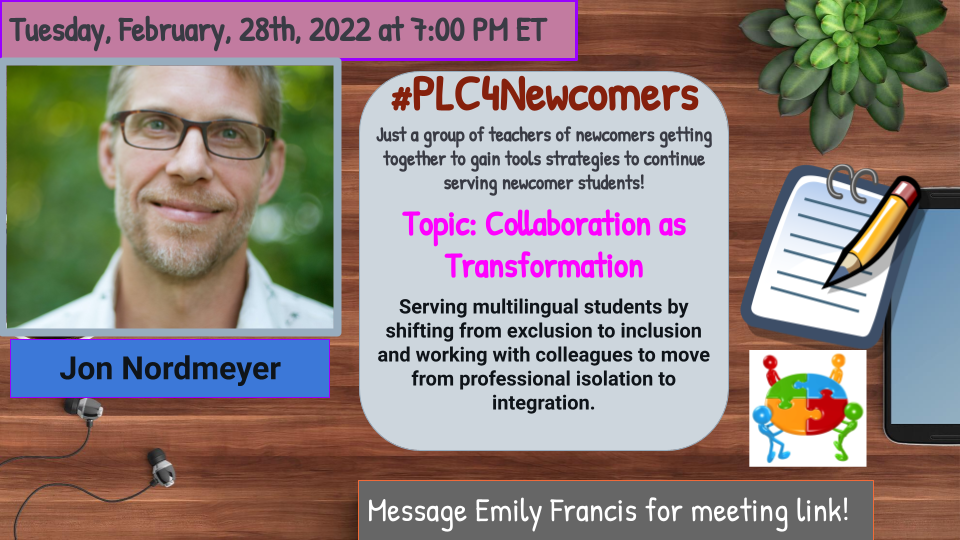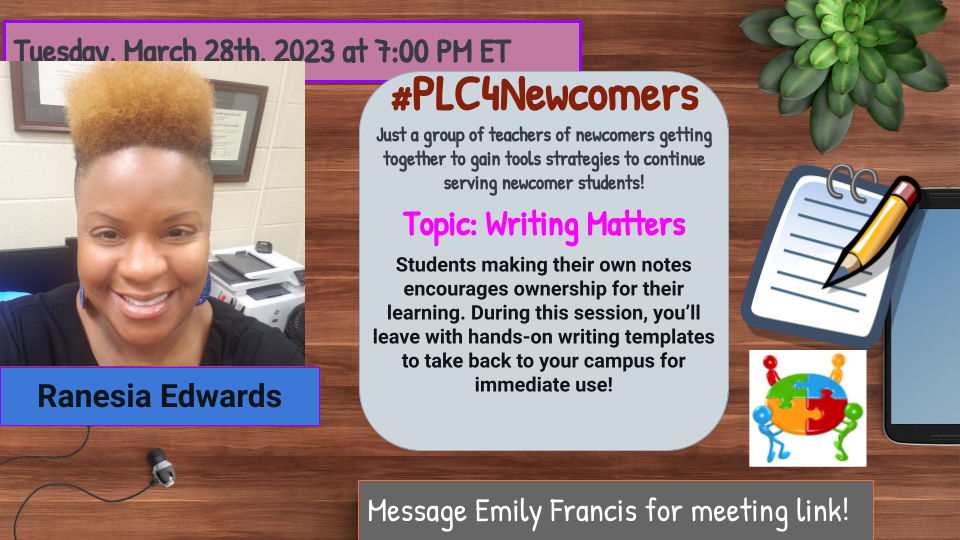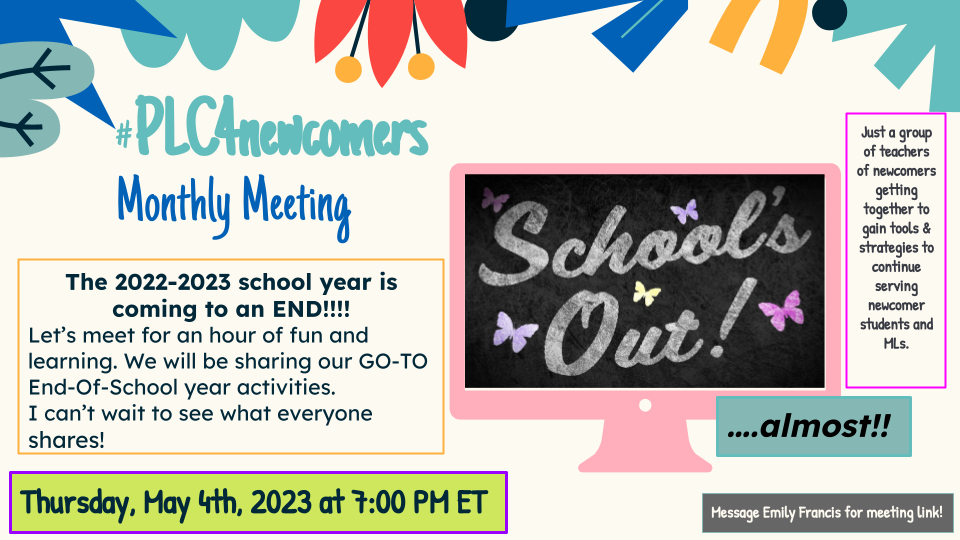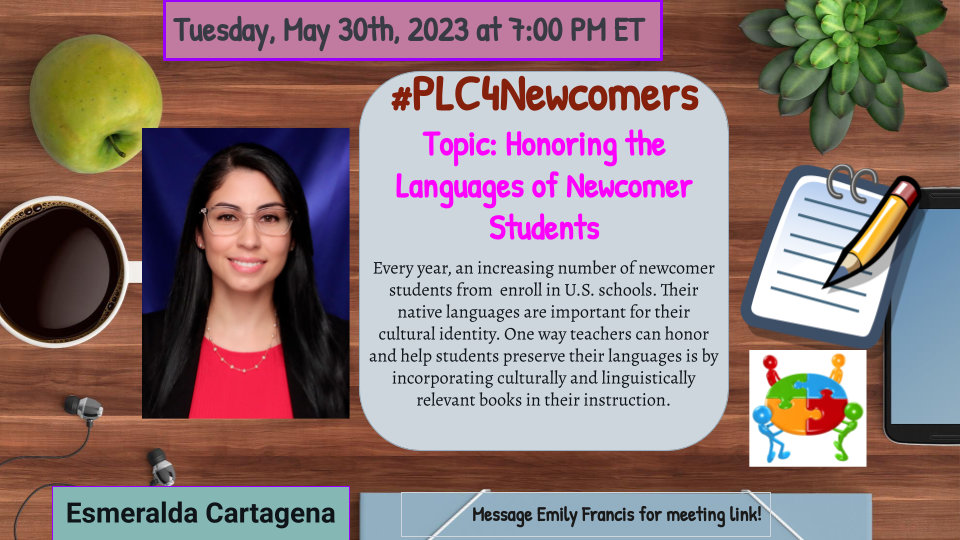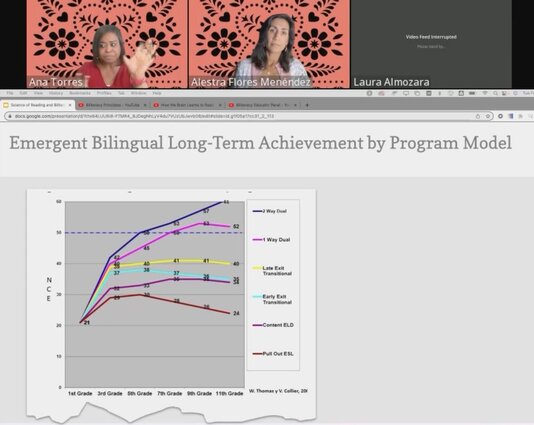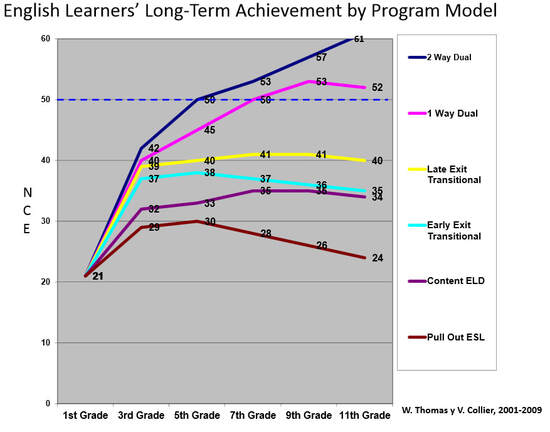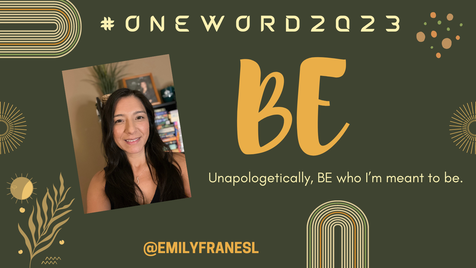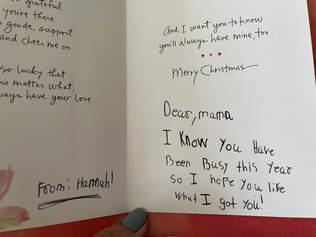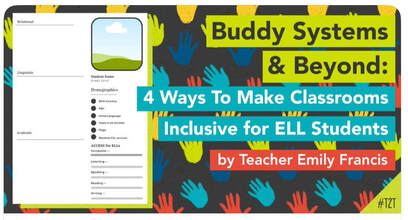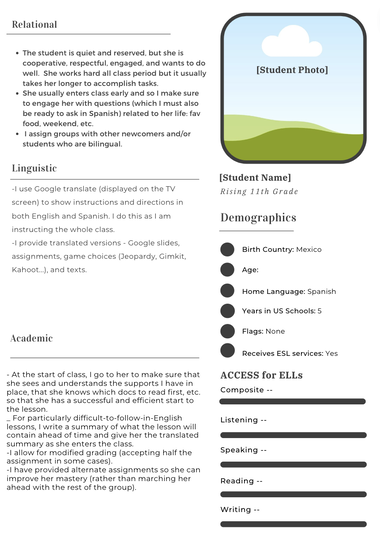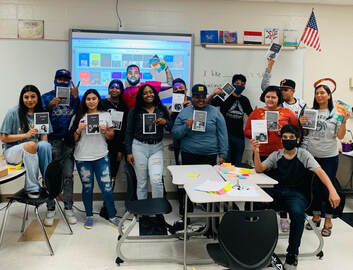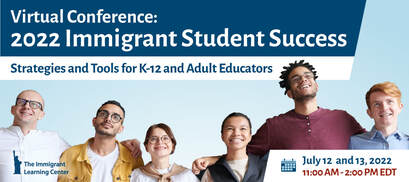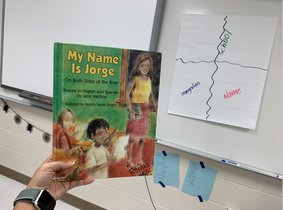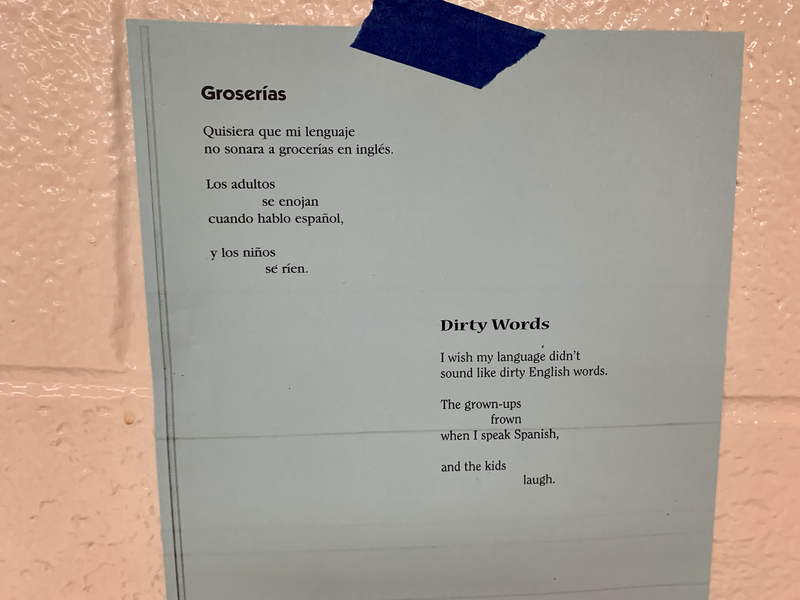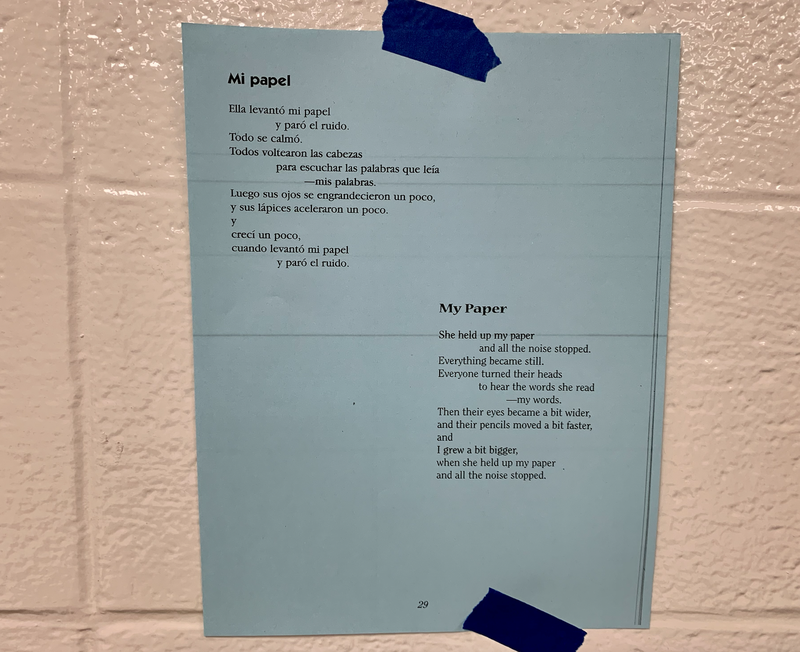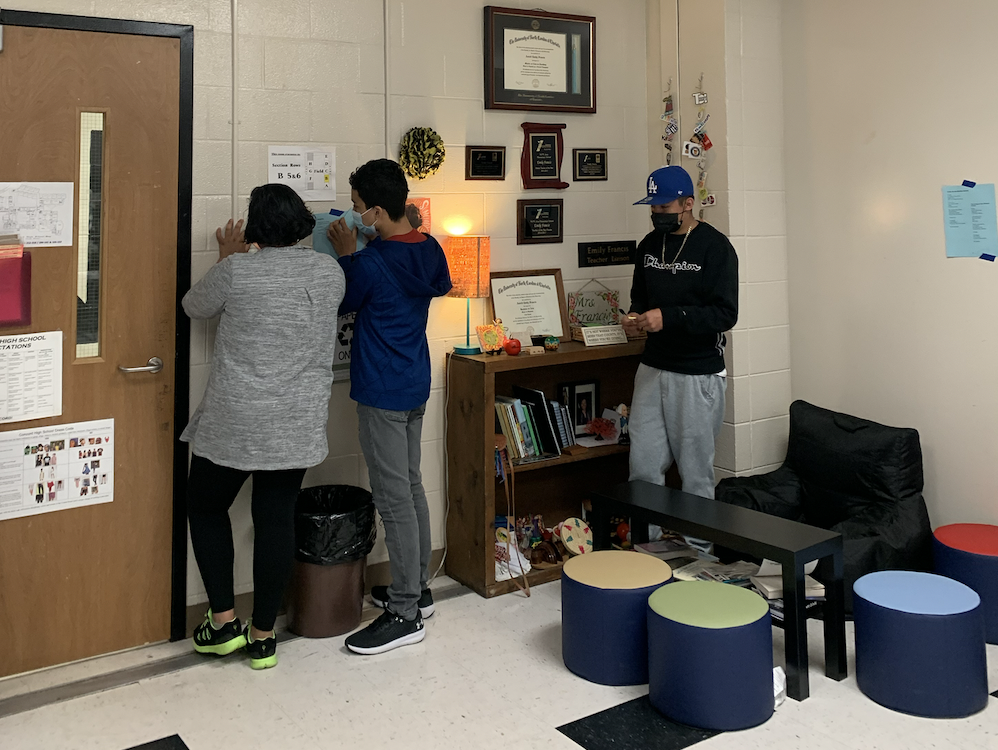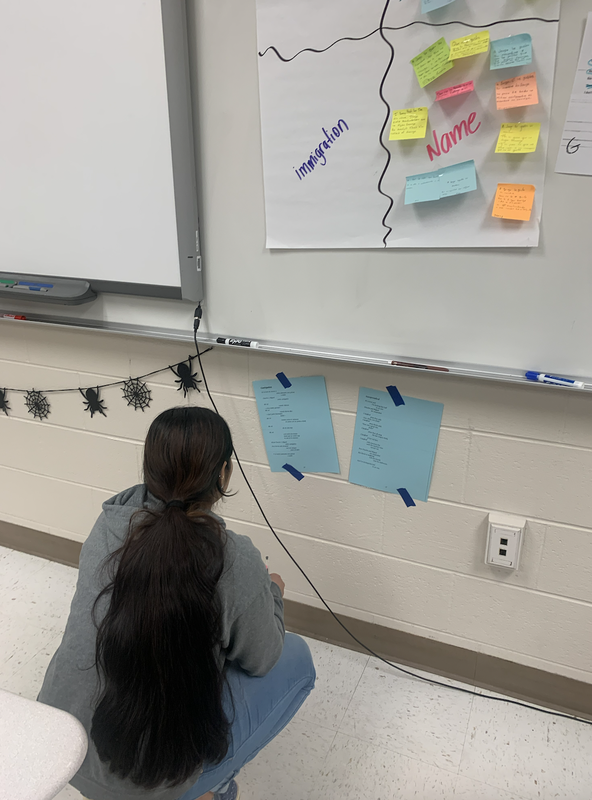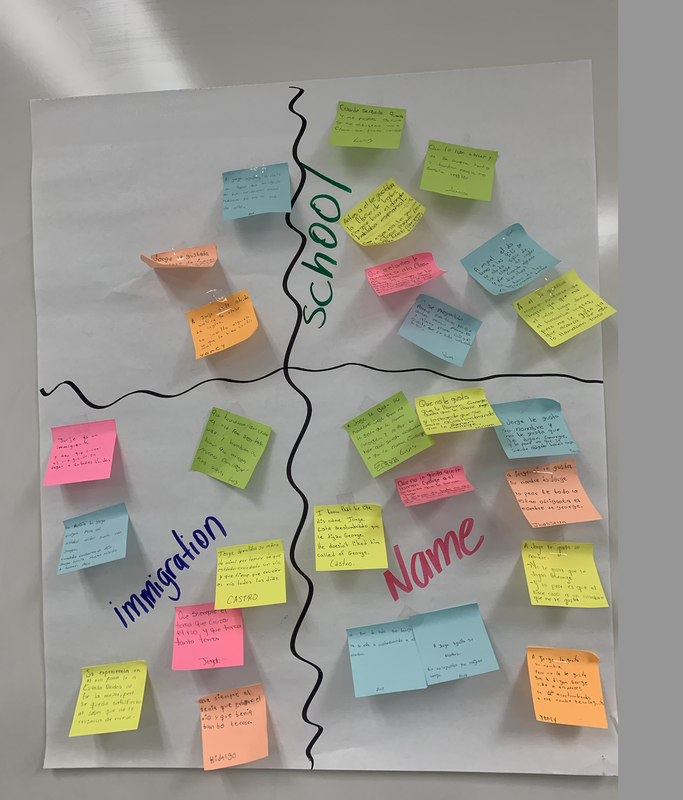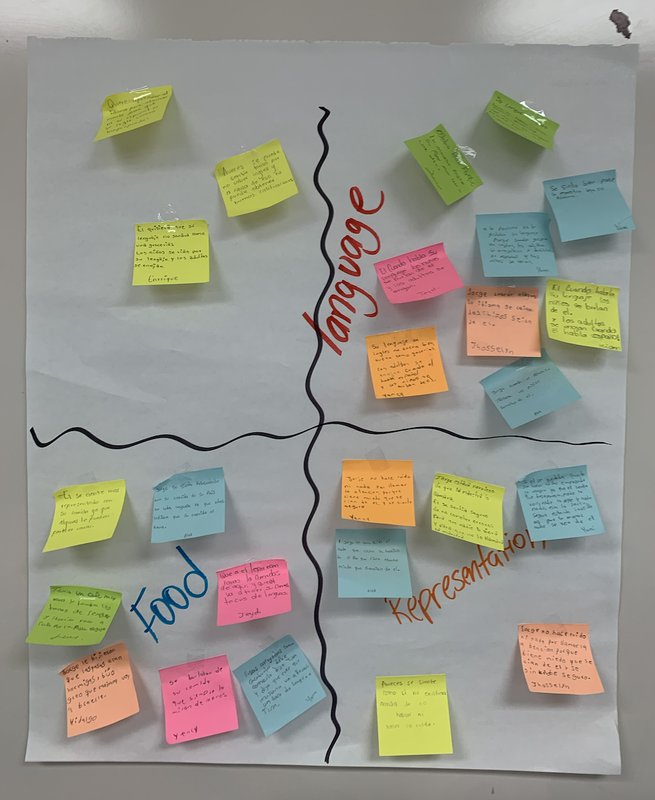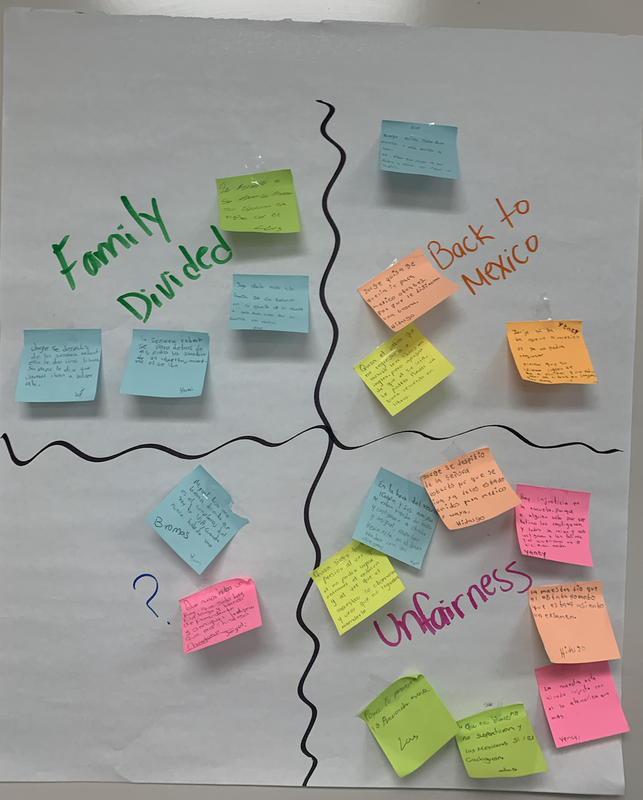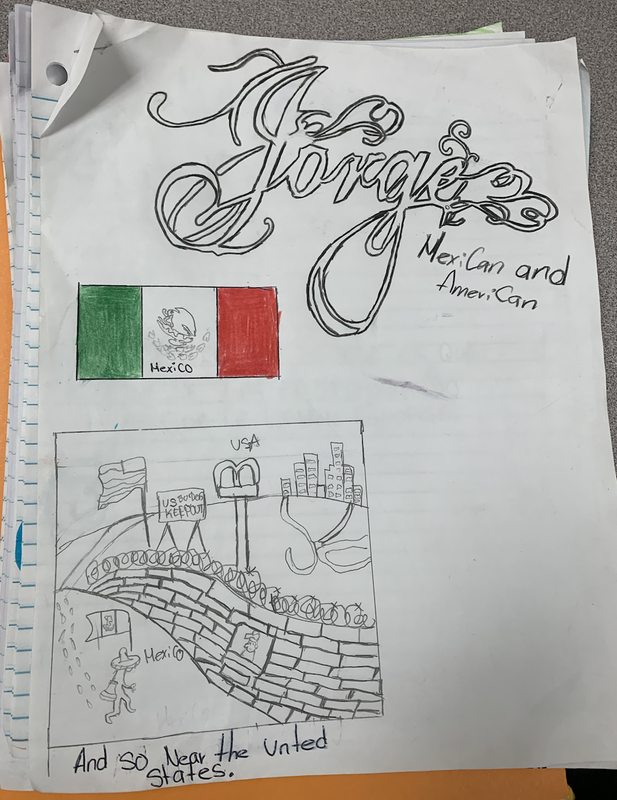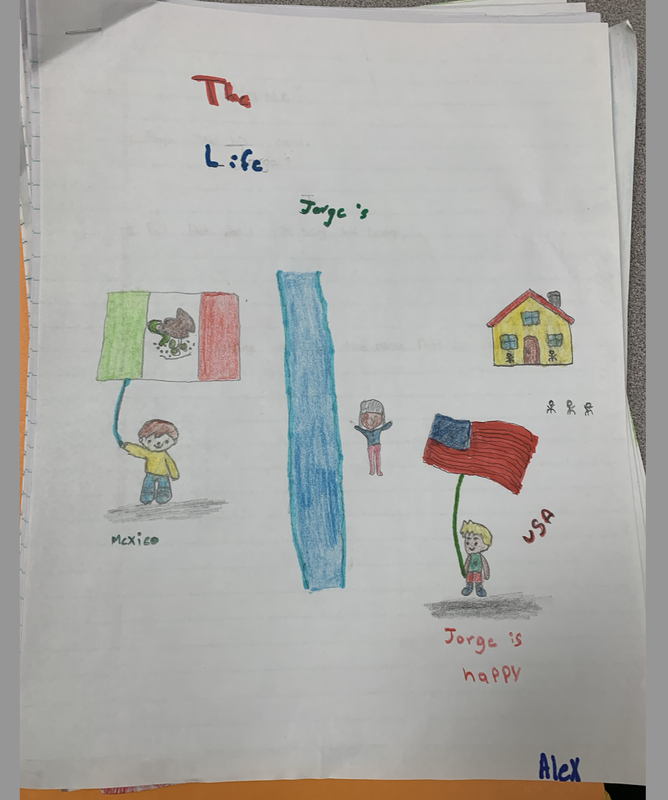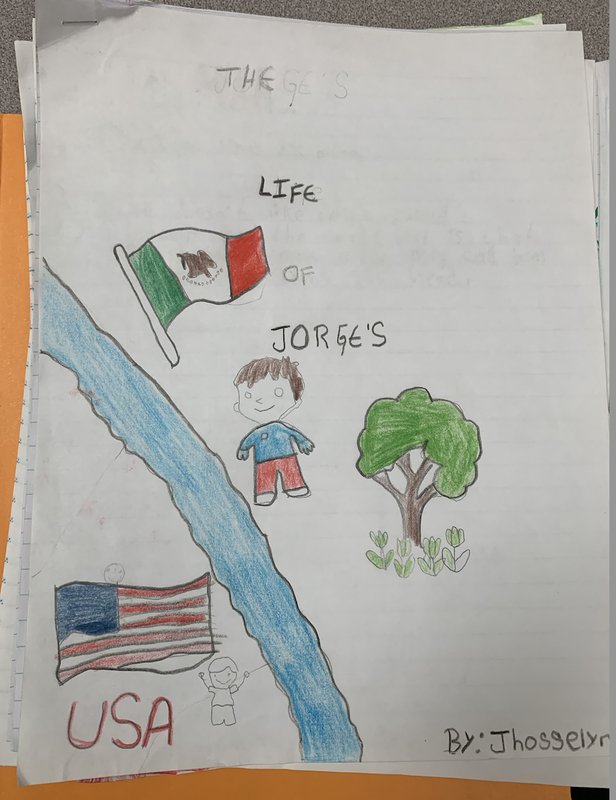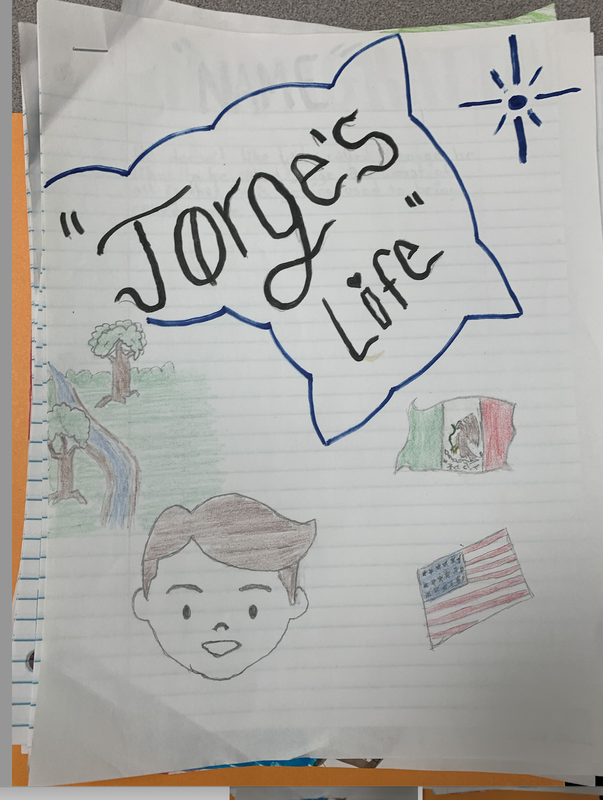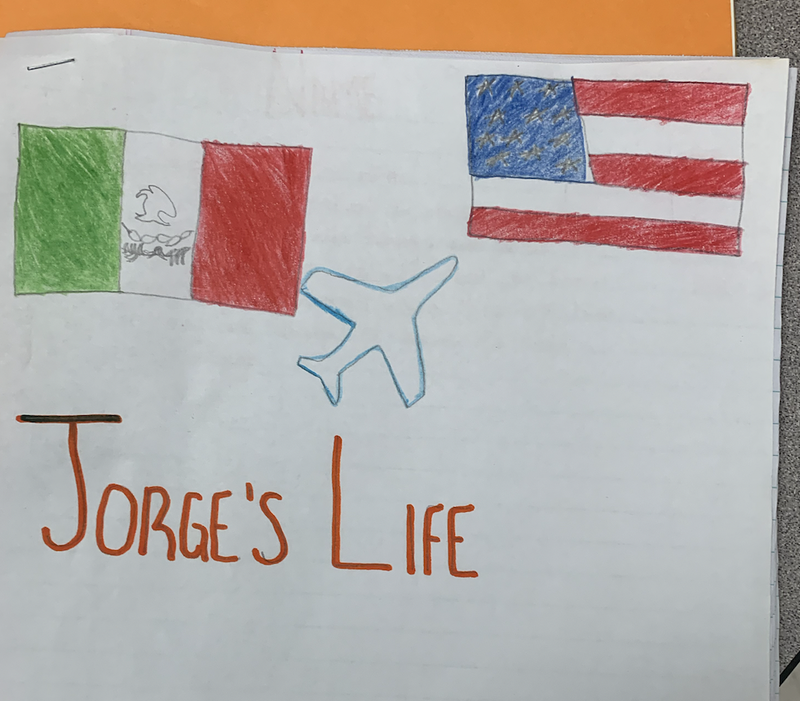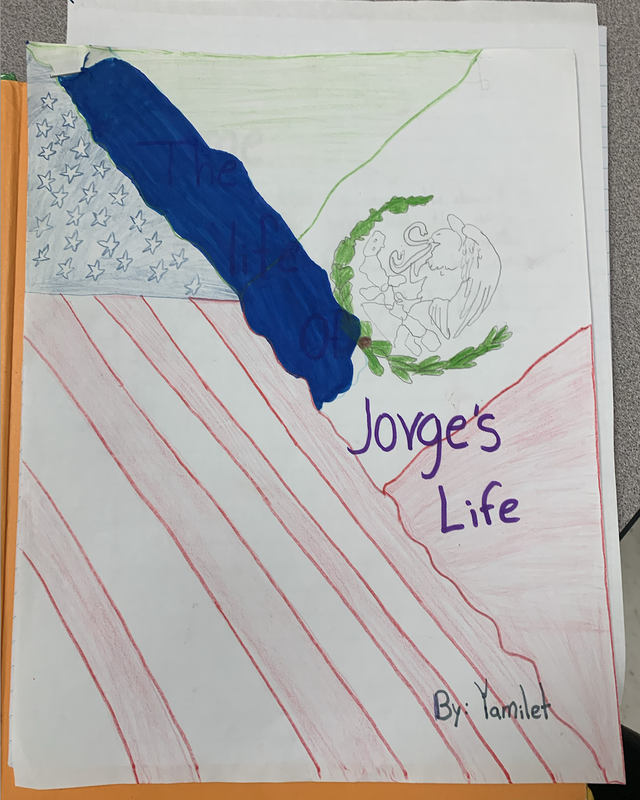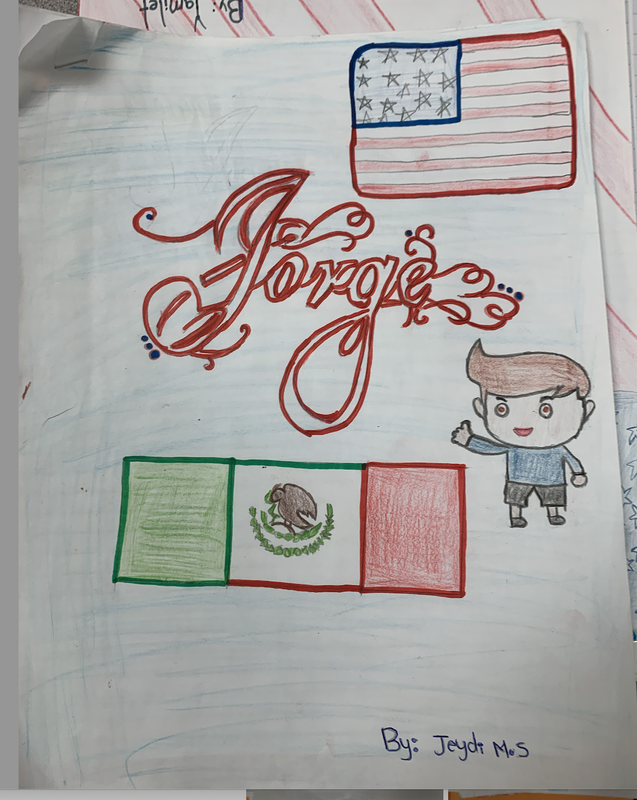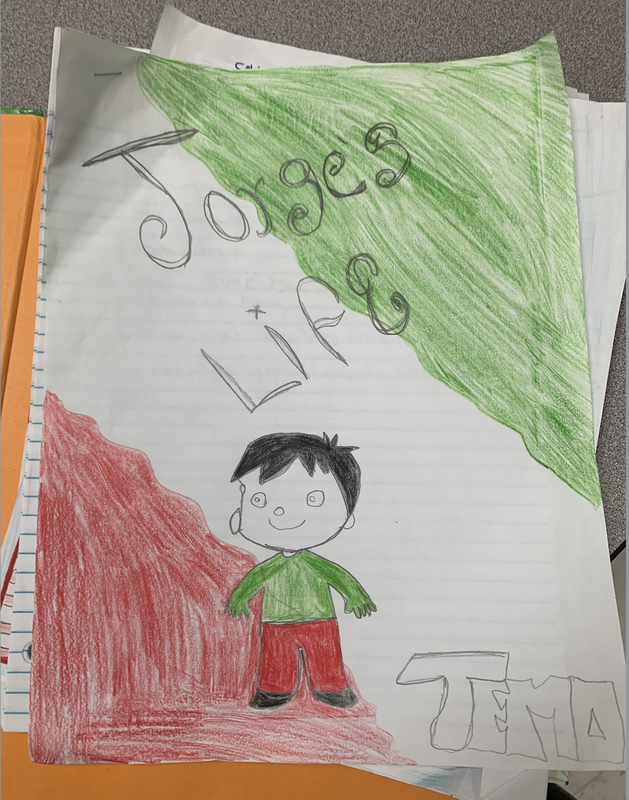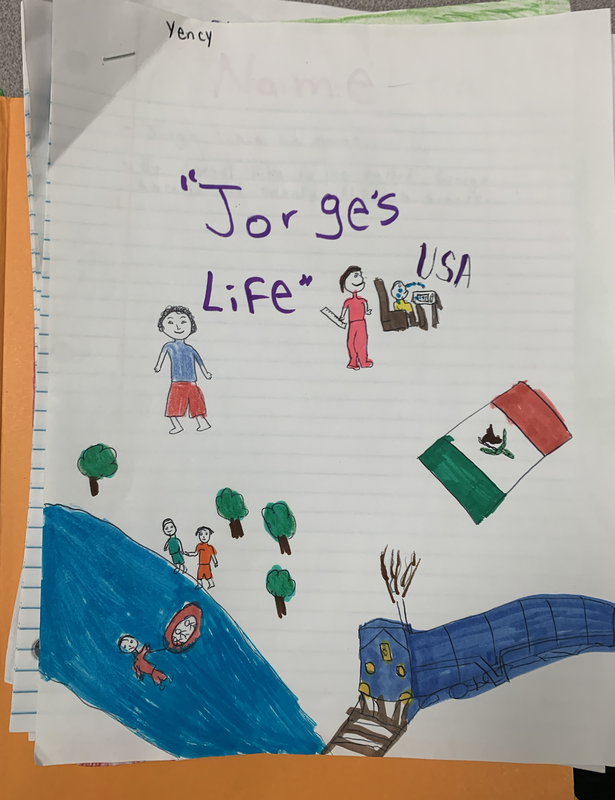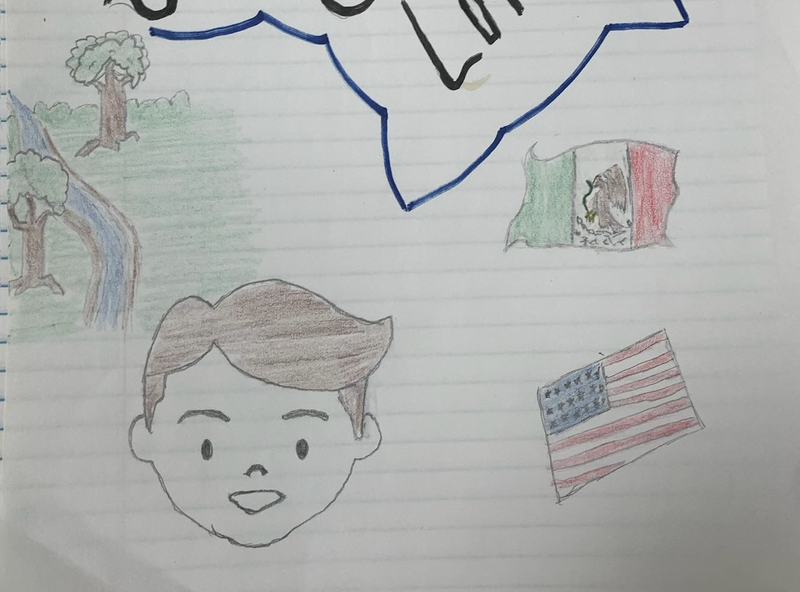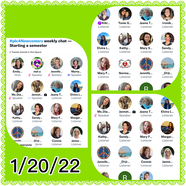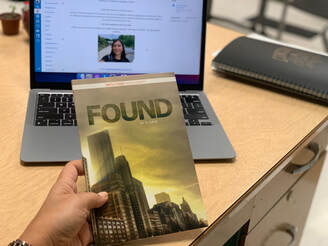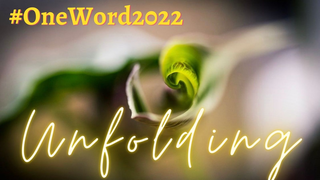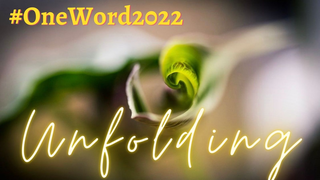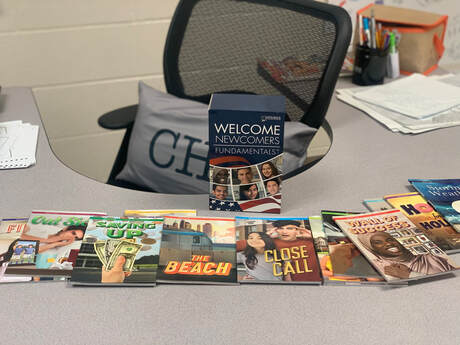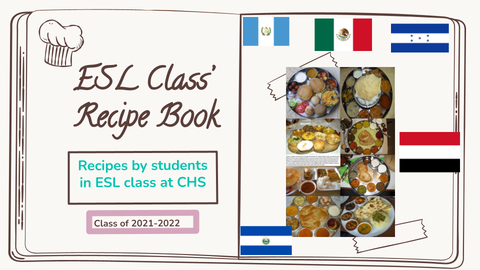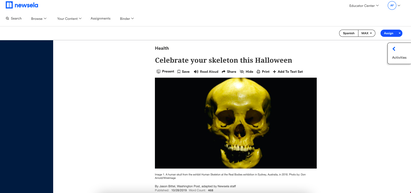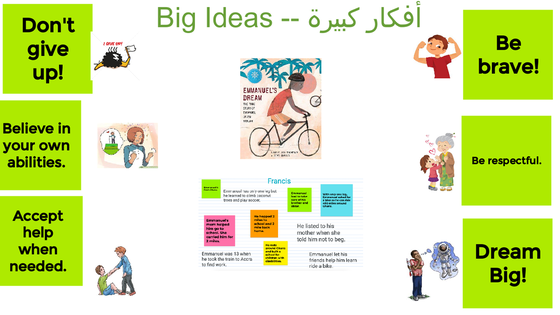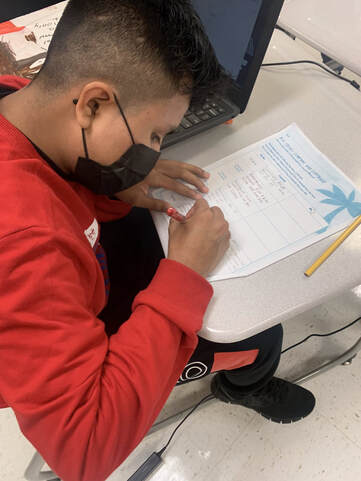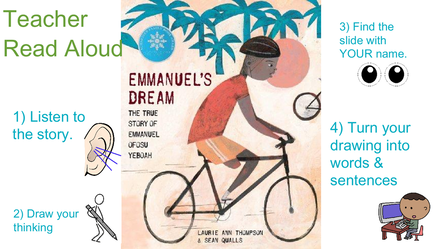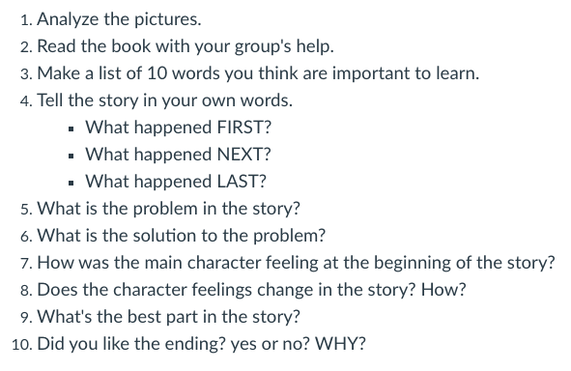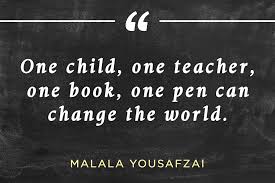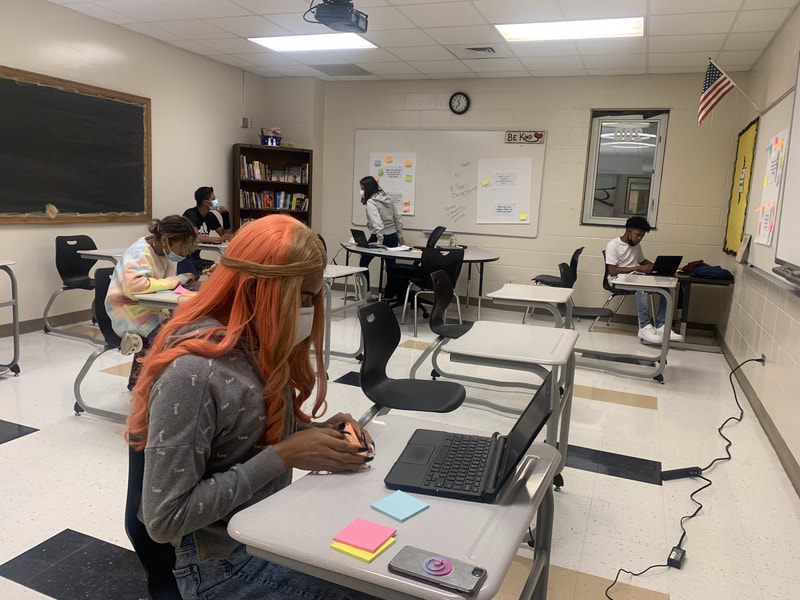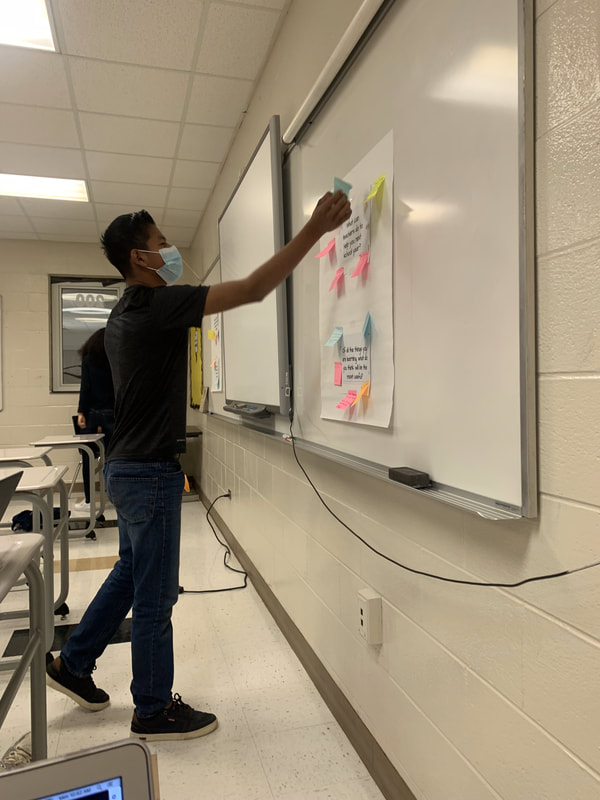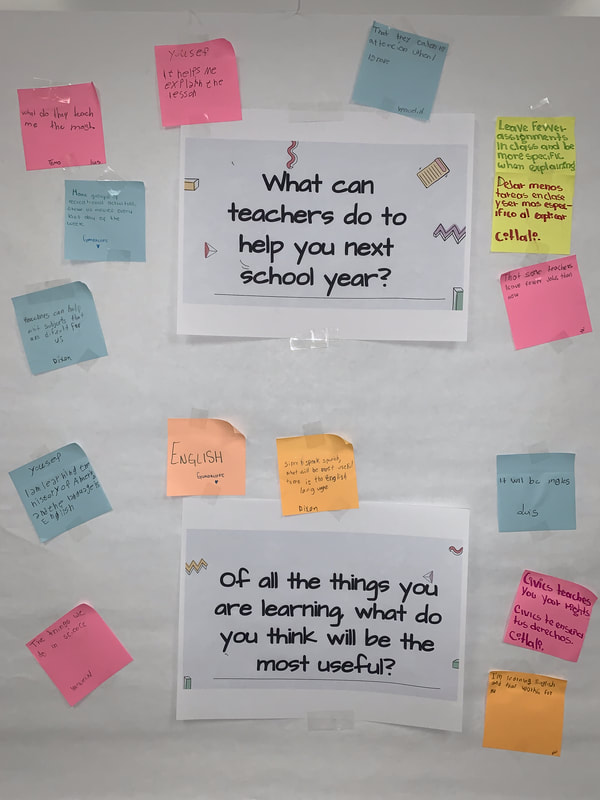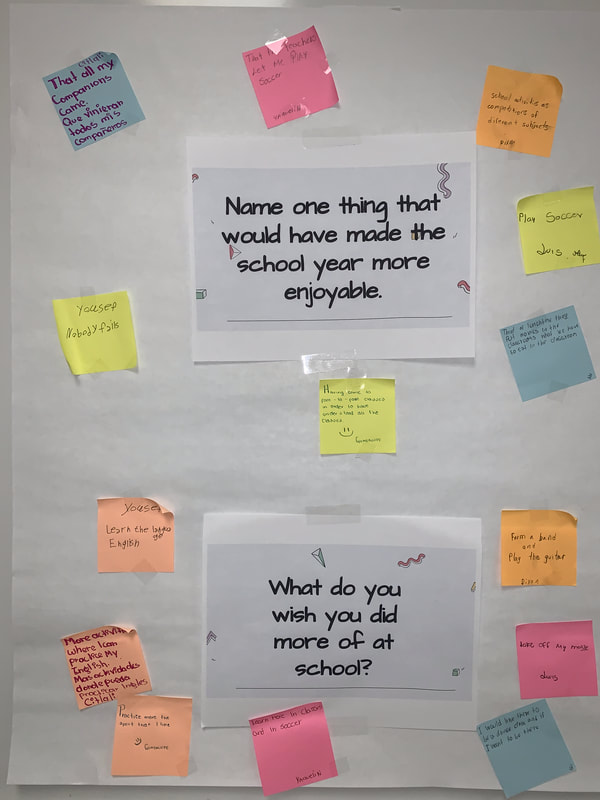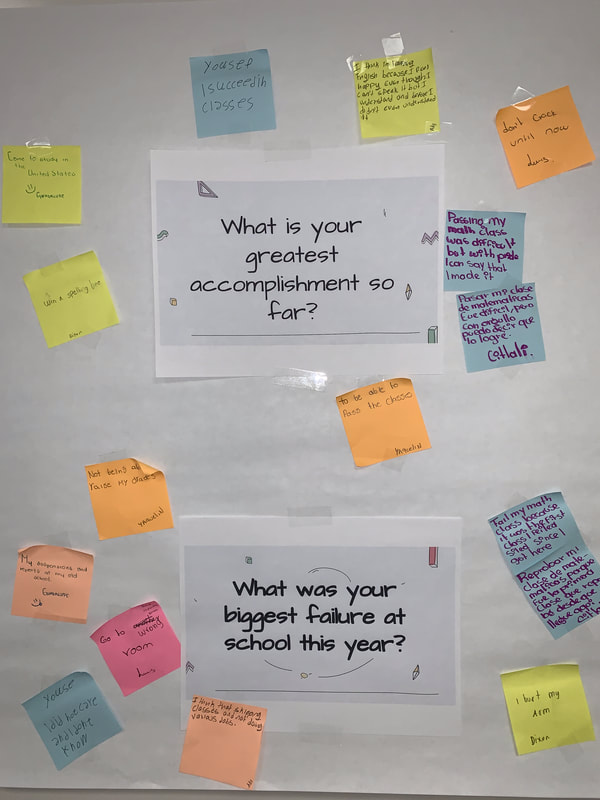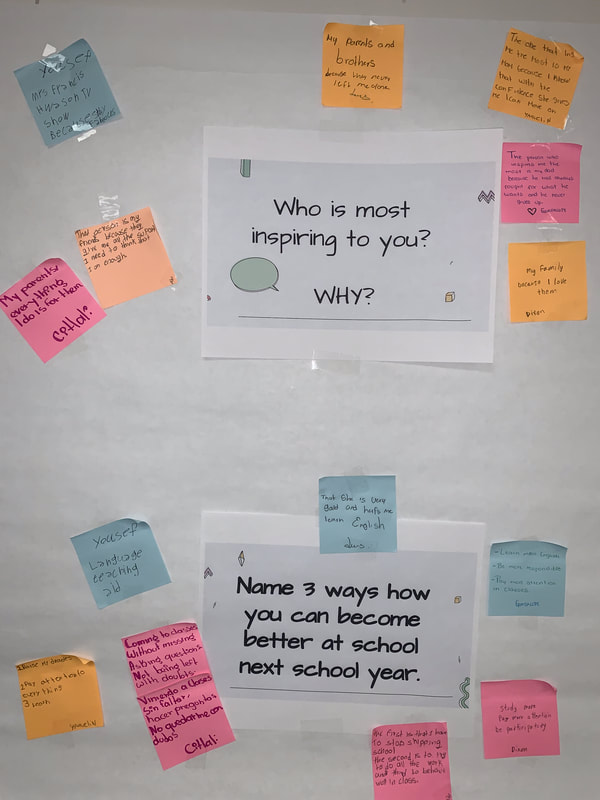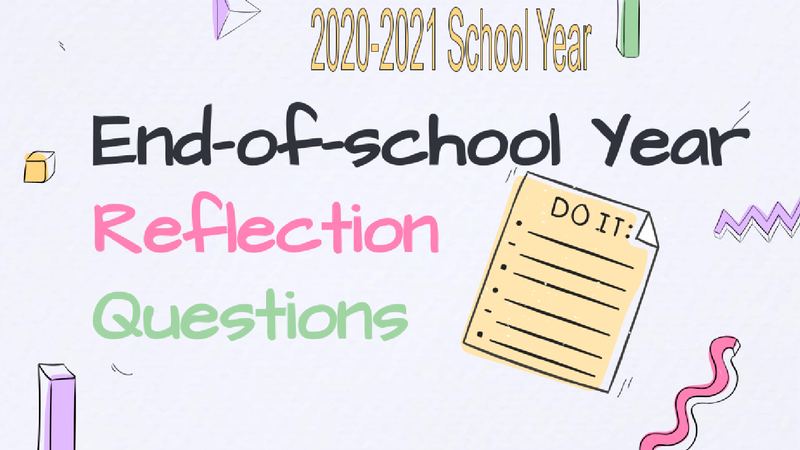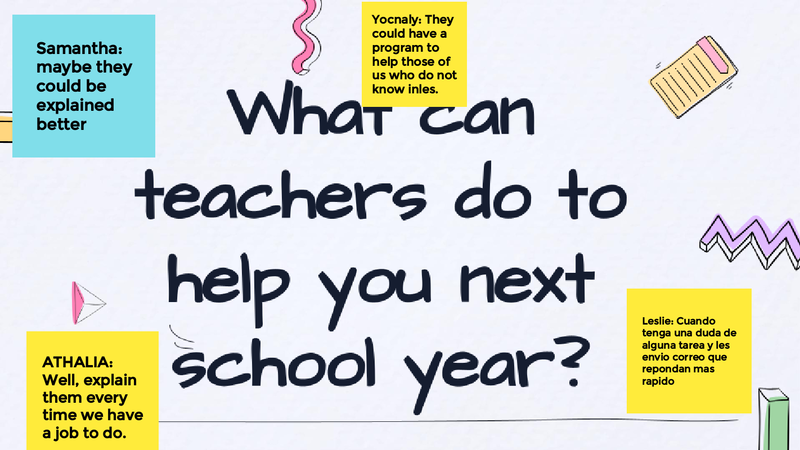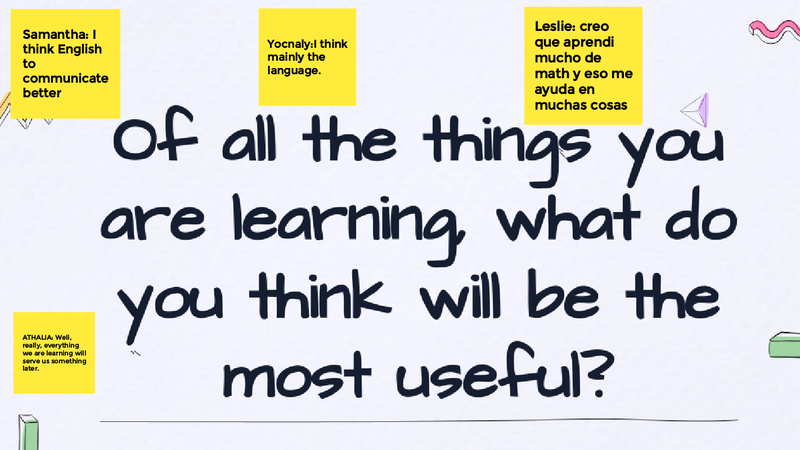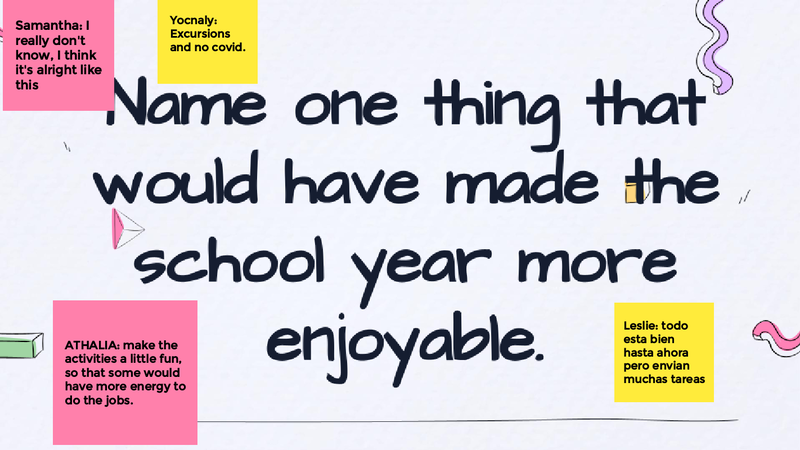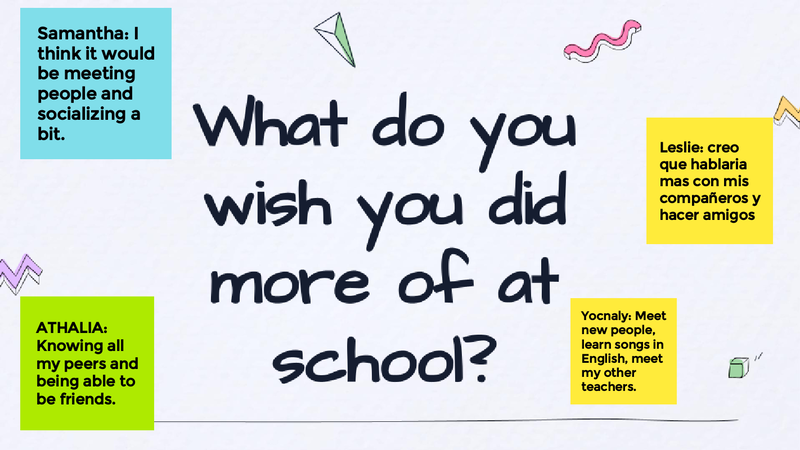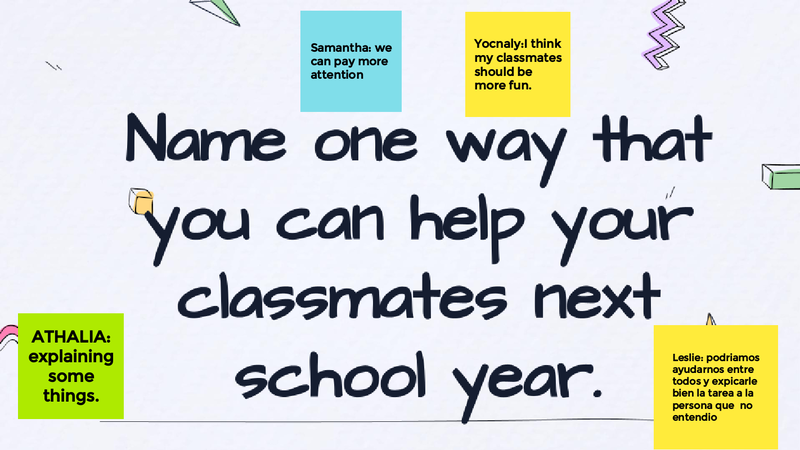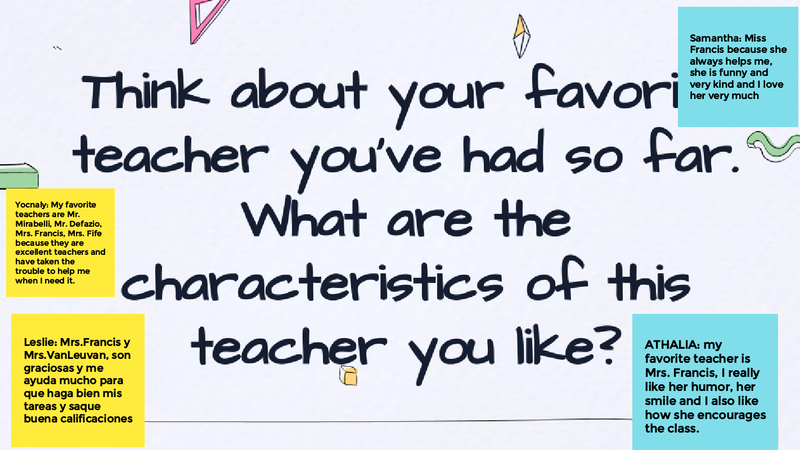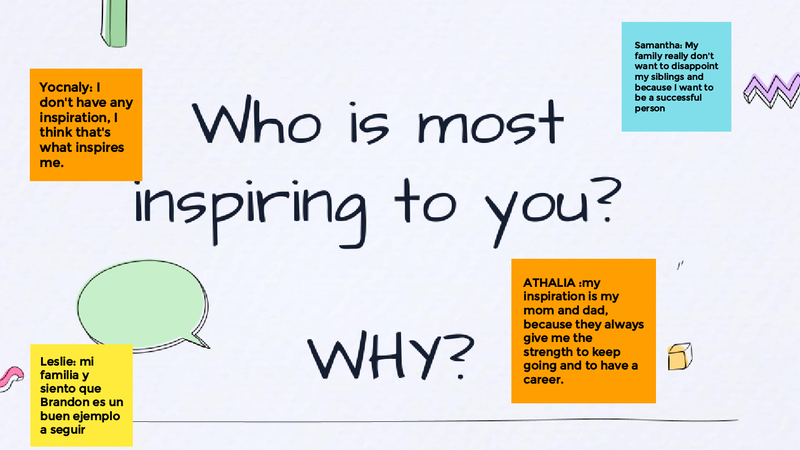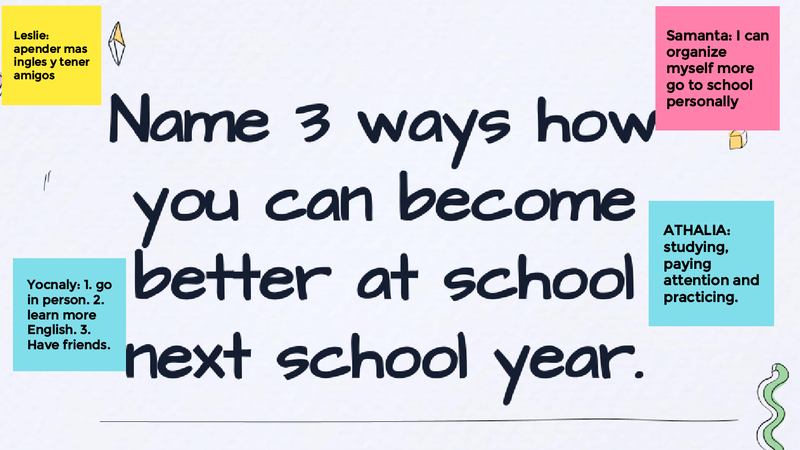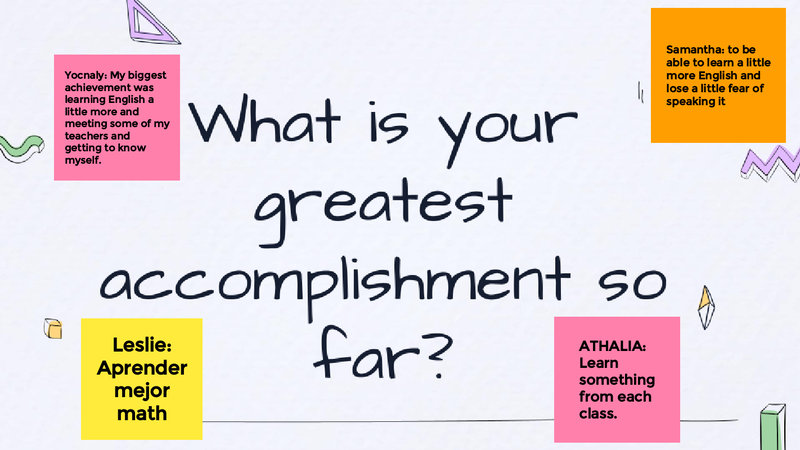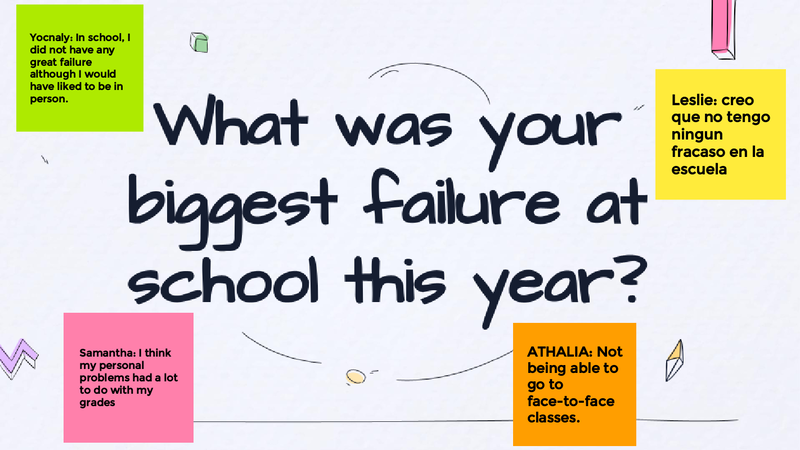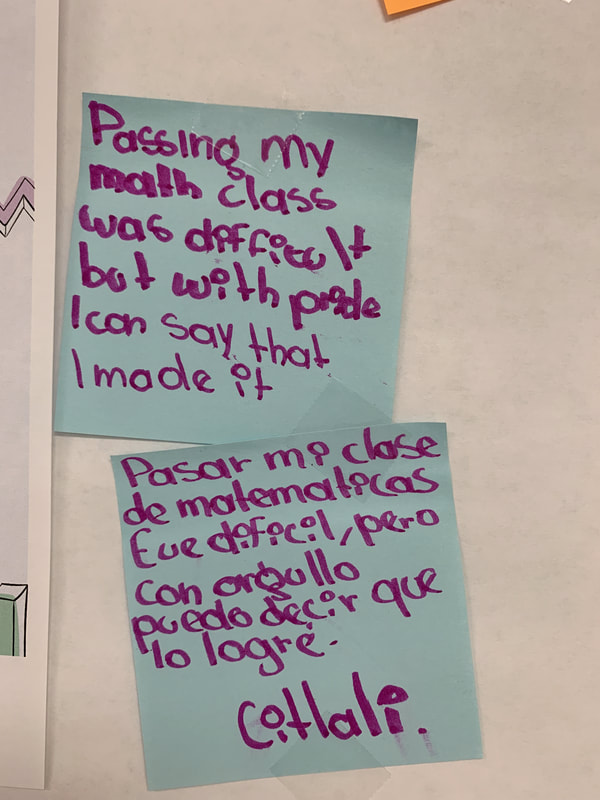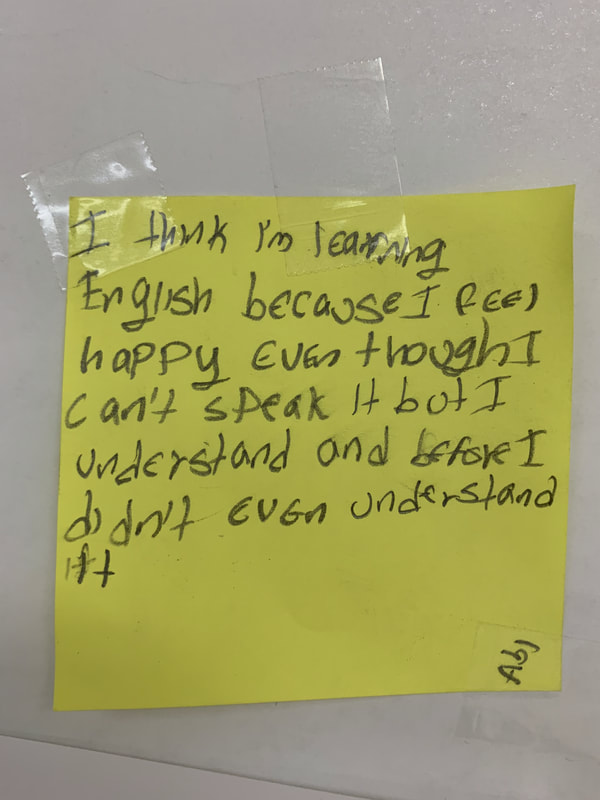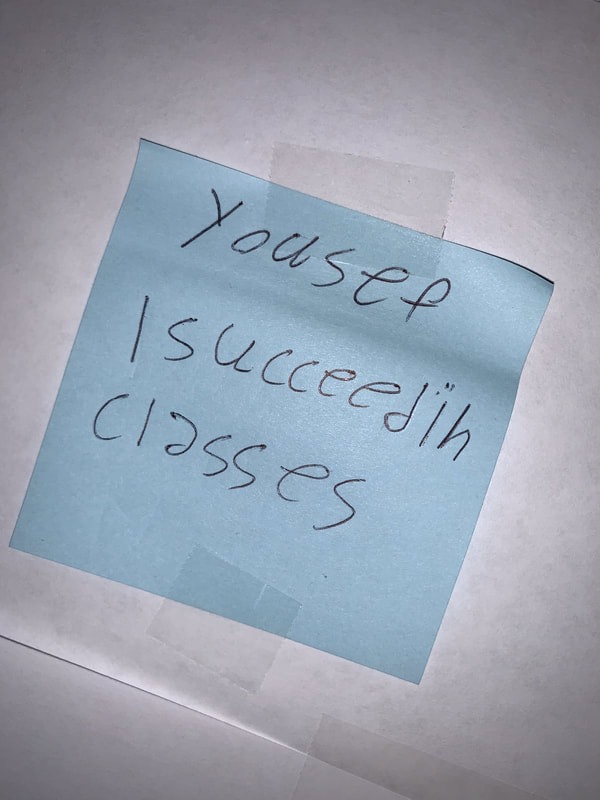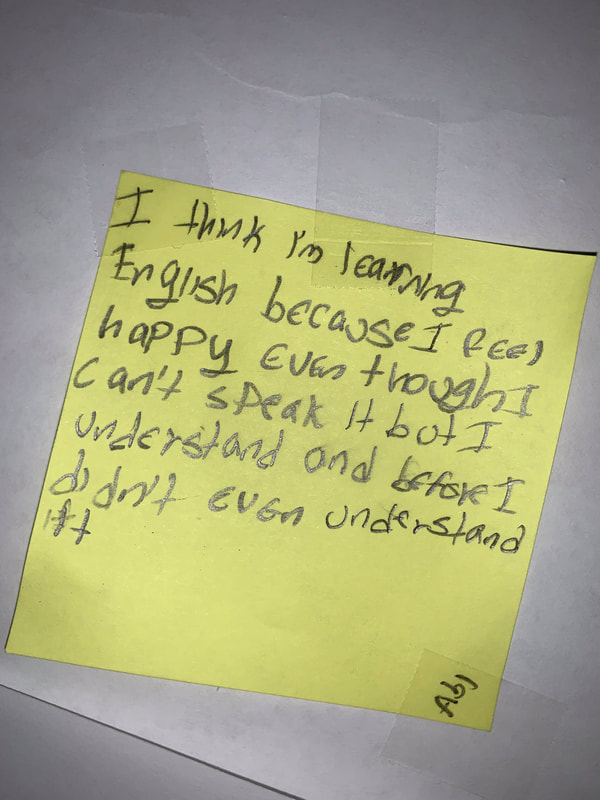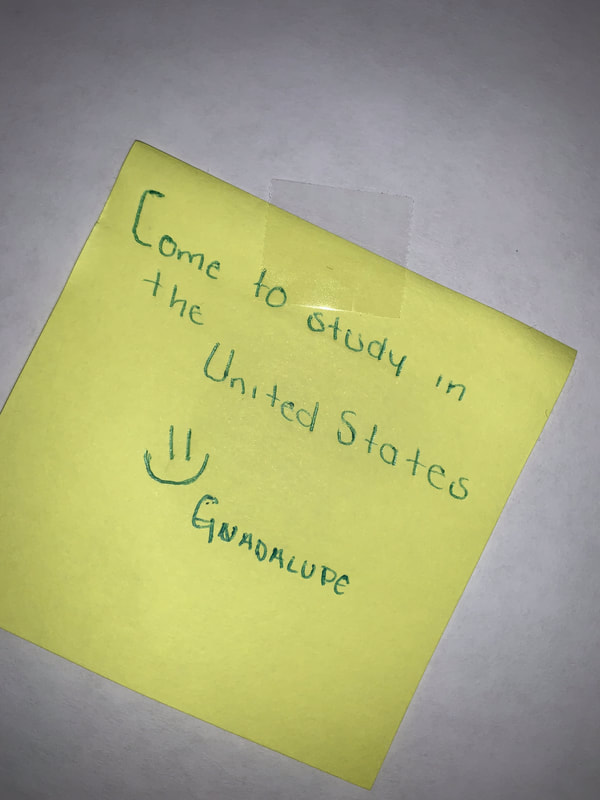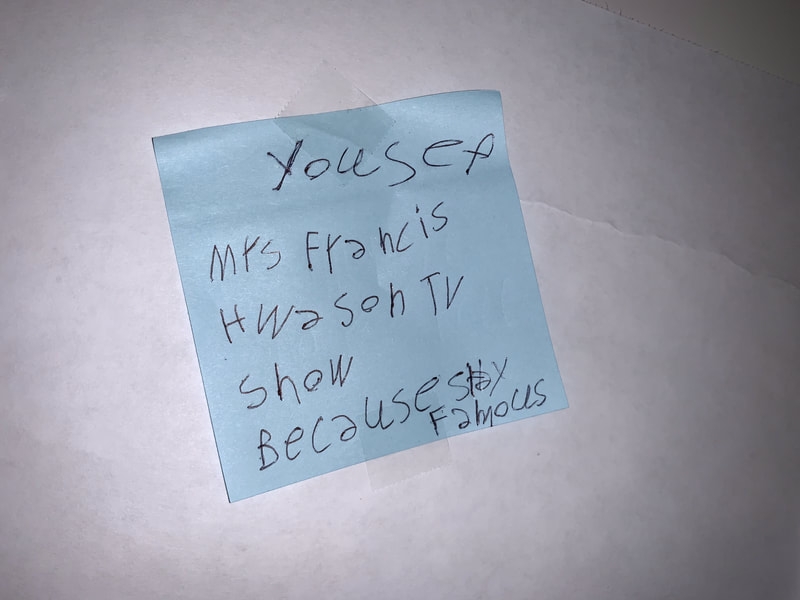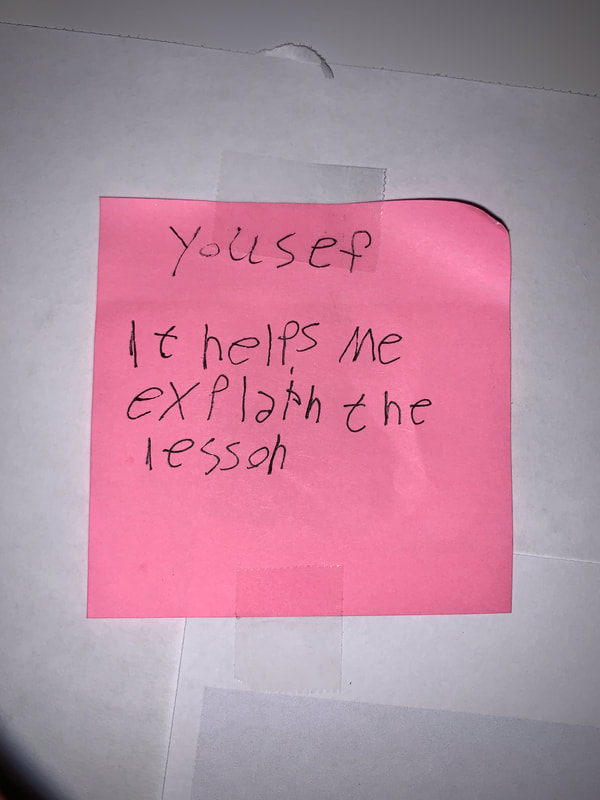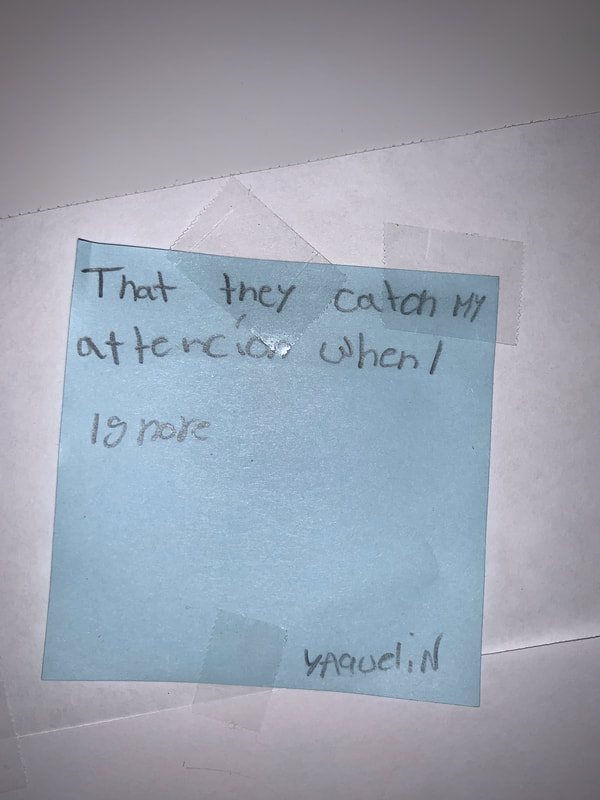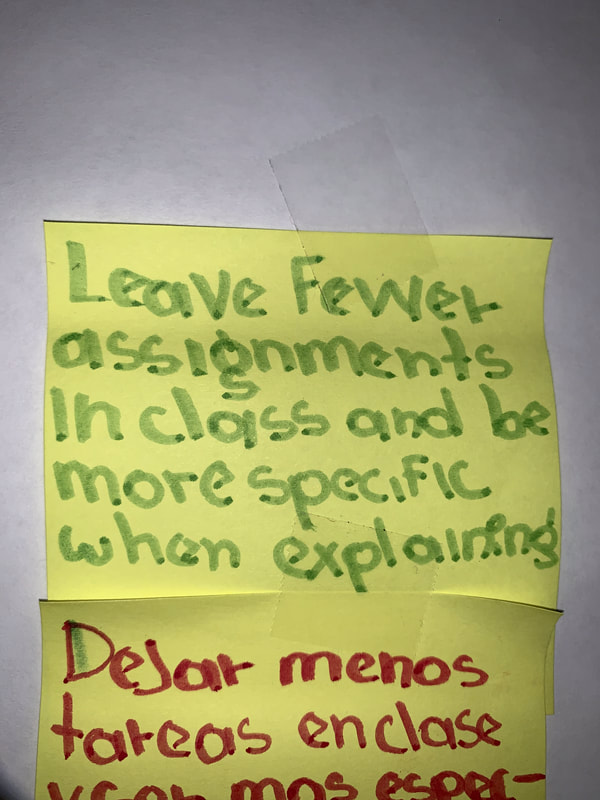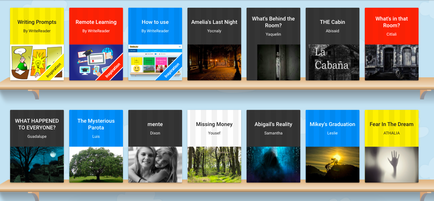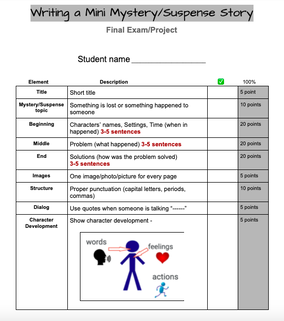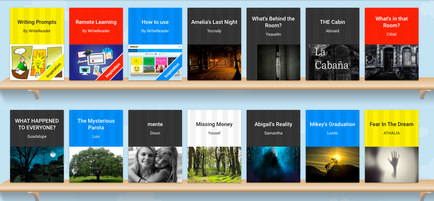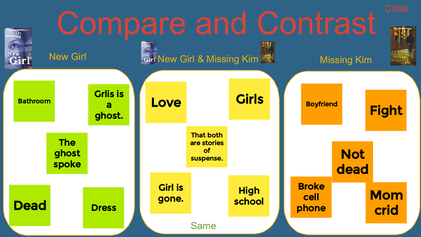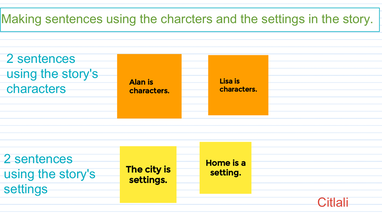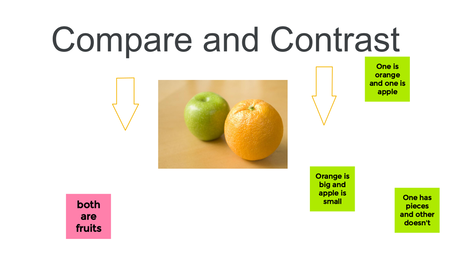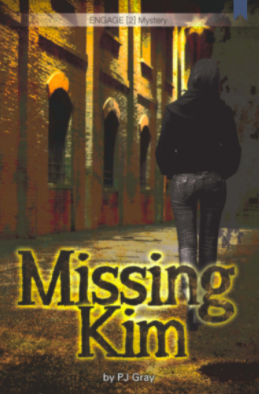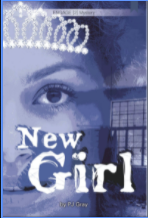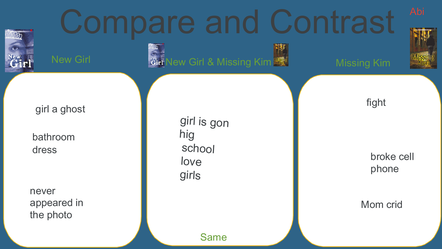Tell the Story Podcast
I couldn't think of a better way to wrap up the school year with my newcomer students than by creating a podcast!
I am ending the school year with 16 newcomers. This is my students' first year in the US and their first course to learn English as an additional language, acculturate, and begin their immersion in the US school system. Throughout the school year, we engaged in many lessons where students had the opportunity to grow emotionally, academically, linguistically, and socially. Stories after stories and activities after activities, my students had the space and time to process their experiences and continue developing their identity as learners while making connections and creating interactions. The core of everything we do in my newcomers' course is HUMANITY. Growing and developing our humanity FIRST is more important than anything else. I hope you enjoy listening to their learning experiences. Process:
This is my ________ school year in the US. I am in _________ class. My first favorite lesson this school year (semester) was _____________, because ___________. My second favorite lesson this school year (semester) was __________, because ____________. My third favorite lesson this school year (semester) was __________, because _____________. My least favorite lesson this school year (semester) was __________, because ______________. This was (a great) OR (not great) class because __________________.
If you choose to do this, let me know! I'd love to hear your class's episodes. Thank you for reading!
0 Comments
This post is wrapping up the writing lessons I've shared in three previous posts. My newcomers are finishing up their first semester in the US and I wanted to demonstrate how capable and successful they can be with writing and demonstrating their understanding. As I stated in my previous post, my newcomers are at all different levels for writing. Some can write in English on their own, others just need a little support from peers, while others need teacher support to guide their writing. Because all students are at different levels, I incorporated an activity for all students to complete while we were finishing up our final essay draft. The editing process for newcomers DOES NOT need to be complicated. Do NOT make it too much that they can't handle because is too overwhelming. My editing process was simple and doable. The goal was to have peer and teacher reviews. This allows newcomers to feel empowered because they edit a peer's work. Objective: I can make my summary better by having my peers and my teacher edit my writing. This objective was comprehensible and doable by all students. We discussed that "edit" is simply reading and fixing what you think needs to be fixed. I modeled it with a paragraph adding periods, fixing capital letters, adding commas, fixing misspelled words, etc. Minor edits! Students changed papers with a peer and they all received a PEN. I instructed them to NOT erase anything but to write over the written work that needed to be edited. Some students used Google Translate to verify some spellings and that was OK! Working at their own pace
This is POST #2 of three different posts
Read post #1 (It's not Magic) AND #3 (Editing Writing Process with Newcomer) The Process - Part II
~ "Reading is like breathing in; Writing in like Breathing out" ~ These were the words that helped me understand that the language lessons I provide to my students go hand-in-hand with the language I require them to produce. I understand that my job as an educator is to make my students fall in love with language, words, stories, and imagination. I must maintain classroom walls dripping with language produced by them as a resource as they develop their language domains. I encourage you to read Ms. Allyn's article HERE.
So, with this in mind, here's the next part of the process that led to my newcomers producing the amazing writing I mentioned in Part I. 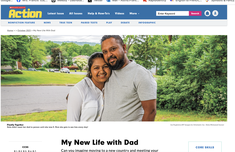
First, I want to state that this was an improvised lesson and planned overnight.
I was in my English II inclusion class when I looked over our Vietnamese newcomer's shoulder who was looking up on Google "What is a summary?" to complete his assignment. I realized that even if he translated the word "summarize" into his home language, he still didn't know the skill. I did not doubt that I had to cover this skill in my newcomers' class. I started the day with our newcomers by having students write their "I can statement" which stated that we were writing a summary. I didn't want to intimidate or discourage students from having to write. I wanted them to feel successful from the beginning. I explained that a summary is just "telling the story in your own words". No grammar complications. Some might say that I need to offer more structure or a more grammatical approach. However, I advise NOT to complicate the process for beginner students. They are in the entering stages of producing language, so we don't want to make them feel that there are too many hurdles to jump through to share our thoughts on writing. In the next lesson, you'll see how editing processes allow room for grammar and more to better their writing. I read the story out loud again, but this time it was the entire story. I had students follow along with me on the screen or in their paper magazines. Once in a while, I'd stop and they would have to say the word I left out. Again, as I'm reading, there's interaction with simple Q&A, hand gestures, body language, sounds, laughter, and excitement. Next, I posted a blank piece of chart paper and told them that to be able to summarize the story, we needed to pull the most important words from the story since we were NOT using the article to summarize it. The list of words we were pulling from the article was about to become the foundation of the events of the story we want to tell in our own words. To keep them engaged and accountable, I had them also write the words on a black piece of paper so they would have them with them. I told them that I was going to read again and STOP at the end of a paragraph to make a list of ONLY the most important words needed to retell important events. I'd circle the paragraph and say, "Tell me what is an important word that can help us make a sentence." - Students would blur out words (some good - some not so good) but I'd validate the words that would go with the events that were essential/important in the story. As a teacher, you must know that there are parts in the text that are not essential to the story. If you take that part out of the story and it doesn't affect/change the meaning/plot of the story, then it's not important. Otherwise, you'd end up with way too many words for students to follow. As students were telling me words, I'd write them on the chart paper until I ran out of room and we got to the end of the story. I tried using a different color marker for each paragraph so they'd remember that it was a different event or paragraph in the story. I pointed to each word and I read them out loud. Then, I had them read them with me. This is POST #1 of three different posts Read post #2 (Act of Writing) AND #3 (Editing Writing Process with Newcomer) A few days ago I shared on social media some amazing writing my newcomers produced after a lesson. My students received many compliments. I was asked about my "magic" to have newcomers writing so much. There is no magic. But, there sure is a LOT of...
I want to share my planning and lessons process to get newcomers to write...and write a lot! I'll make this post as simple as possible because YOU need to take this and make it your OWN. Add your details, ideas, and character to it so it works for the students YOU teach. This lesson is almost towards the end of our first semester. I've served this group of newcomers for several weeks (15 weeks). Be sure to check the previous lessons that contributed to becoming amazing writers. I'll be posting several lessons a little bit at a time. The Process - PART I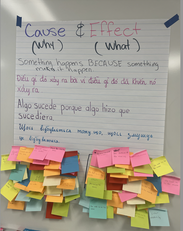 I introduced the cause-and-effect topic to my students by co-creating an anchor chart. I say co-created because we created it all together. It was not super fancy, but it was multilingual!!! I wrote the following sentence on the chart and had them read it with me. "Something happens BECAUSE something makes it happen." I had students translate the sentence and had volunteers write the translated sentence below the English version. We had the sentence written in 4 different languages. I explained that the CAUSE is the why (reason) and that EFFECT is the what (result). To practice understanding this concept before applying it to text, I had this Jamboard presentation with four sentences to identify the cause (why) and the effect (what). These were simple sentences wit images that helped with comprehension. I gave students sticky notes to place on the anchor chart which part of the sentence is the cause and which is the effect. We did a couple together to model after I read each sentence aloud, chorally reading, and students read alone. I went around and checked their answers before they placed them on the chart. As I went around, I had students read the sentence to me. I was able to assess who was understanding the concept and who needed more support. We are going strong! #PLC4Newcomers Our PLC for teachers of newcomer students for this school year is going strong. From January to May, we've had a wonderful time meeting on a monthly basis and learning from fantastic guest speakers who willingly joined us to share their expertise with us. Below you'll find links to our meetings as we wrap up our 2022-2023 school year. Be sure to share this YouTube playlist with all your teacher friends. All sessions are available HERE. If you decide to join our monthly meetings, complete this form: bit.ly/PLC4Newcomers2022 Stay tuned for our summer meetings!!
Follow the research! The first time I heard/read about Virginia P. Collier’s research on second language acquisition was during my first English as a Second Language course in college. I was blown away by the research that language, culture, and academic development MUST be supported SIMULTANEOUSLY not in isolation. Read “Promoting Academic Success for ESL Students” book to learn more about this research and more. As soon as I began working as an ESL teacher, I began practicing this research & sharing it with my colleagues. I came to realize that to practice this research, collaboration with mainstream educators was IMPERATIVE. My first co-teaching experience was intimidating but wonderful. We even ended up looping from 4th grade to 5th grade with our students — The best co-teaching years I've ever had at the elementary level with Ms. Culbreth. Today, during a webinar (which I highly recommend) I was reminded of this important research— just look at the data in the image below. And though this well-known research across the US is on dual language education, I can't help but be drawn to the ESL pull-out services and its results. Pulling students out of their mainstream classroom, beyond second-grade, to provide ESL services is detrimental & IT DOESN’T WORK. I worked with elementary school children and from Kindergarten grades to 2nd grade, students didn't complain about coming to my ESL classroom. However, students in 3rd grade through 5th grade, would prefer staying in the classroom and working in small groups with me. They felt part of the classroom community. They knew they belonged and were different than their peers. As my co-teachers and I planned our small group instructions, we intentionally grouped our ESL students mixed in with all students. Our book clubs and group services were so much fun. So, here're some of the strategies that have worked as I worked with ESL students in mainstream classrooms:
This is just my 11th year teaching ESL so I am still learning and practicing. I'd LOVE to hear from you! What are your thoughts? Are you familiar with this research? How are you practicing this research? What services do you find more effective and why?
Please, share your answers in the comments below and I'll be happy to reply to you. Thank you so much for reading! "One Word isn't about WHAT but WHO. Who do you want to become, not what you want to accomplish?" ~ Dan Britton I LOVE this time of year - time of reflection and planning. Time to analyze what went well and what can get better. I'm not tough on myself. I know life is life and things happen. Sometimes things go as planned, some other times they just go the opposite of what we planned. Anyway, while reflecting on 2022 and my #OneWord, I can see how this word really came alive. Many things unfolded in my life. I became an author, I started serving students mainly in an inclusion model, my husband and I celebrated our 20th wedding anniversary...and so much more that is UNFOLDING! I had a busy year. I know I did. But it really hit me when I read my daughter's Christmas card message. "I know you have been busy this year so I hope you like what I got you." This message coming from my 8 year-old really got to me. It made me stop and think how many times have I told her "I'm busy" and put other things before her. Or how busy had I've beed that she didn't reach out to me because she knew I was "busy". Anyway, as I was thinking about my #OneWord2023, I wanted a word that would help me with the "being busy" reflection. I don't think I am stopping what I'm woking on since my book just released. What I can do is BE. Unapologetically BE who I want to BE and also BE present.
Thank you for reading! This post first appeared on Teacher2Teacher website on November 30th, 2022 HERE Buddy Systems & Beyond: 4 Ways To Make Classrooms Inclusive for ELL StudentsAs a longtime ELL teacher and inclusion co-teacher I work alongside content-area teachers to develop more welcoming experiences for our ELL students. I traveled to the United States as a child with my family from Guatemala. Having lived the experience of learning English as a student, I have an instant understanding of what my ELL students are experiencing. But I know that many teachers don’t share that background. It can be a new way of thinking for teachers: What does a student who is learning English need in order to be successful in a general education setting? What does a student need to feel truly included in our learning communities? Every teacher I know wants their classroom to feel comfortable and supportive for students. Here are 4 ways my teacher colleagues and I build those communities. 4 Ways To Include ELL Students in Your Learning Community1. Create student learning profiles to communicate strengths and needs across teacher teams. Last year, our team of ELL teachers collaborated with general education teachers to create student profiles that would be passed on to the next year’s teaching team. Our thinking was that after spending a full school year learning about the strengths and needs of our students, we’d gathered valuable information that could benefit those students moving forward. We pulled some of the information stored in our school systems about each student, we added a photo and then described our students’ academic strengths and needs along with accommodations that each student found supportive. We shared what we knew about the students’ English speaking and listening skills, and which tools, like Google Translate, they used to help them. At the beginning of the school year, we shared links to the profiles so teachers could glance at the photos and pick up some information even as they were still learning students’ names. Teachers would say, “Oh, I didn’t know Ani uses Google translate.” The student data stored in our school system is full of numbers and information that can be a lot for a teacher to absorb about every new student. These profiles distilled the essential information, going beyond official records to highlight approaches recommended by one teacher to another. It cut down the ramp-up time at the beginning of the year, so students and teachers could hit the ground running. 2. Build trust and develop “buddy systems.” In language-inclusion classrooms, our ELL students have the chance to learn alongside their peers and practice their English skills. One of the accommodations that can be required for immigrant students is to have a classroom buddy, and this works best when a sense of shared responsibility for one another’s learning is built in the classroom. Buddy systems can be so valuable, because we want our ELLs to work using the English language, but if they don’t have trust with the person you pair them with, then there’s going to be no communication at all. Teachers should develop a list of students who can share the responsibility students share as learners. To identify potential buddies, teachers can create a Google form where students can express the level of support they are willing to share with peers. Maybe one would like to show the student around the building, maybe another student would like to go over class procedures, or another student could go over classwork and homework requirements. Students will feel more comfortable when all this important information comes from peers who are learning just like they are. As teachers, our job isn’t just to help our ELL students, but to build a community in which students support each other. 3. Try to shift perspective to understand students’ behavior. The majority of the teachers who were born here have totally different lived experiences than our students, and that can lead to misunderstandings. So much of being an effective teacher for ELL students comes down to the empathy to imagine what it’s like to walk in a student’s shoes. For example, a content teacher recently said that two of the ELL students in her class were “copying” each other’s work. I talked with her about how, from her perspective, “copying” an assignment is wrong, but I encouraged her to look at it from the students’ perspective. I said, “They don’t know English, and they’re trying to participate and meet your expectations. So, helping each other is actually collaboration, because they want to do the work and be active members of the classroom community.” The teacher immediately understood, and she began to reinterpret the moment from the students’ point of view. It was a moment of growth. As teachers, we may not always have the opportunity to learn about every student’s full experience. But we can take the time to learn about immigrant experiences through reading books and having conversations. We can try to imagine: What would I do if I were sitting in a classroom where I didn’t understand the language, but I wanted to engage? That type of thinking can inspire small changes that support our students. 4. Tap into your resources for your own growth, and be willing to be vulnerable. Now that I’ve moved into a full-time co-teaching role, I’m so impressed when teachers come to me with questions like, “Can you help me? I don’t have experience with ELL students. I don’t know how to approach this.” That’s being honest. I’m so grateful when teachers are willing to be vulnerable. Many schools and districts have resources available for teachers who want to grow in their ELL skill set, from ELL coaches and co-teachers like me to robust information-sharing systems. Many states and districts are also forming Teacher Networks where teachers of Multilingual learners or experts in language acquisition are gathering information and sharing resource hubs such as shared documents, websites with tools, book studies, and Twitter chats for learning. Some districts use the ELLevation platform. Not only does it house our ELL data, but it also provides a strategic component, where teachers can acquire activities to make content accessible and have more ELLs engaged in content and language learning. It can be hard to admit that something is beyond our expertise, but it’s so powerful. Coaches like me can do a lot more to support a teacher who is asking for help from that space of vulnerability. And I can return vulnerability in exchange, knowing that I may not know about math content, but I can offer strategies for sharing that content with our students. And isn’t that vulnerability what we ask of our students every day? Thank you for reading! Author Guest Post: “Their Story, Our Legacy” by Emily Francis, Author of If You Only Knew: Letters from an Immigrant TeacherThis post was first featured on Unleashing Readers website on September 25th, 2022 - HERE During the first days back this year, our school received a special guest speaker, former educator and coach, who left a remarkable legacy. Coach Smith was fired up, sharing the wonderful stories that highlighted the amazing history of our school which he collected from 1893 to the day he retired.
I began to think about how his passionate stories impacted every staff member listening. The power of a story hit me to my core, and I began wondering about our students’ stories: What stories are students telling about our school? About us as teachers? Just like Coach Smith can share his powerful and impactful stories about a building, so our students are out and about telling stories about us. Of course, I connected it to my personal experience as a former student new to the USA. As a fifteen-year-old scared immigrant, I entered high school with so much passion and persistence but left with shattered dreams. My story about my experience as a student in the USA is not a good one. It’s a story of pity and sadness and pain. I can close my eyes and feel exactly how I felt in my high school classes. These were uneasy feelings I don’t want my students to feel. I cannot remember a teacher who would have incorporated practices to support my culture, identity, and strength. My high school years made me question my own identity. Just the fact that it was never acknowledged made me question my own existence. Thinking about my personal stories from my former high school and listening to Coach Smith led me to think about my legacy. George Couros said, “Your legacy is not what you do. It’s what your students do because of you.” I dare to add… It’s what your students SAY because of you. Feeling like we have been robbed of our identity may cause dysfunction in society. I know. I lived it. I now strive every year to make sure equitable practices are in place to better serve our students. I had the honor and the privilege to attend and present at the 2022 Immigrants Student Success Virtual Conference. If you can, check out the many different recorded sessions that can help you provided support to your immigrant students. The conference covered:
My Session: Identity Affirmation Through Literature, Language and StorytellingLet me know if you watch my sessions! I'd love to hear your takeaways!
Thank you for reading! My Name Is JorgeI have to be transparent and share that poetry is not one of my favorite genres to read or to choose as a mentor text to teach my students. Of course, once in a while, I come across some amazing poems that shake me to my core - like "My Name is Jorge: on Both Sides of the River" by Jane Medina I LOVE using this book towards the end of April to celebrate Poetry month but also to begin introducing our last unit of the school year - Moving Stories. I cannot remember how I came across this book, but what I do remember is turning every page and finding myself reflected in every word. I'd say that this is one of the first books I came across in my first year of teaching and it impacted so much in the material and resources I began using to teach my multilingual students. What fascinates me about Jorge's story is that each poem is a window for the reader to learn about an event and experience in Jorge's life. Each poem is at a kid-friendly level that children can understand and learn from Jorge and his family. Lesson #1Unfortunately, I only own two copies of this book so I had to get creative to have students read the book. I started by analyzing the book first and deciding which poems are the core of Jorge's story. Even though all the poems are fantastic, I knew that reading the whole book would've been overwhelming for my newcomers since there are 27 poems. The poems I chose are: My Name is Jorge Invisible Why Am I Dumb? The Busy Street Dirty Words Mexican Dummy Tine The King of the United States Ants-On-A-Log My Paper Suspended Men Don't Cry The Test Packing Once I had selected the poems I wanted to have students analyze, I made a list of themes I noticed were highlighted by each poem. The themes I came up with were Language, Food, Representation, School, Immigration, Name, Family Divided, Unfairness, and Back to Mexico. I made a copy of the poems I selected (along with the Spanish translation) and I placed them all around our classroom. The idea was to have students get up and go around the room reading the poems. The assignment was to read each poem and think about what the poem was mostly about. Each student was given a sticky notepad to share how each poem is related to one of the themes listed by the teacher. I had placed the themes on chart paper on the board so students knew what each theme was. Many of the themes were topics we had discussed during previous lessons. I also left a chart paper with a question mark for students who wanted to brainstorm their theme. Lesson #2My students learned a lot about Jorge and his family - As we were discussing what Jorge and his family had experienced in Mexico, throughout their immigrant journey, and here in the USA, I noticed that it was becoming easy for my students to retell the events and connect with Jorge's life. So, the follow-up lesson was to take the sentences we had written on our sticky notes and the knowledge we had gained about Jorge's life to write all about Jorge's life in a narrative format. I put together a packet for each student to begin a story draft. Each packet contained a cover white sheet of paper and ten notebook sheets of paper - one for each theme in the story. After students created a cover for their story about Jorge, they were instructed to retell Jorge's story using the sentences they created from each poem and for each theme. We talked about how a story must have a beginning, a middle, and an end - so as they picked the order of their sentences, they were to consider what might've happened when and in what order. For example, the poem about Jorge's name is. a great poem to introduce Jorge. Next, poems that share about this childhood, migration, school, family, etc. All books were different since everyone had a different perspective of the poems and added their perspective. Each student's book about Jorge had at least 10 pages and was in chronological order. Once the story drafts were ready, students took turns to meet with me to make sure the book was in the correct order. We also discussed ways to make the book interesting and with our perspective and connections added to it to make it interesting. Lesson #3Students' stories were fantastic and I didn't want them to just remain a draft - I knew that these stories needed to go out to their world to read. These stories are such a great example of how powerful a story can be - how important it is for students to read books that reflect and affirm their existence.
I've always used the website WriteReader to encourage my students to publish their writing for the world to see. This, of course, was the first resource I thought about when thinking about publishing my students' stories. Here are their stories. I encourage you to make time to read them and perhaps you can also find a personal connection with these stories. Yency's Jorge's Story Alanie's Jorge's Story Jeydi's Jorge's Story Yamilet's Jorge's Story Miriam's Jorge's Story Alhassan's Jorge's Story Alhussein's Jorge's Story Enrrique's Jorge's Story Alexander's Jorge's Story Jhosselyn's Jorge's Story Luis' Jorge's Story hApPy New Year!
As a year ends and a new year begins, we often hear the phrase “Out with the old, in with the new;” this phrase may suggest that to move forward, one must leave it all behind and evolve new ideas and changes. To some extent, this may be what we want to do, considering the rough year we’ve all had as educators. I feel like 2021 hit us so hard – the uncertainty, the stress, the fatigue, & the emotional roller-coaster in schools drained us. Yet, we showed up. We did what we are passionate about. We poured our heart, soul, and energy into those we love…our students! As the year came to an end, I began reflecting on the core of my persistence and endurance through these difficult days. Don’t get me wrong – I LOVE students. They are why I remain in the teaching field. However, we can argue that we are facing some challenges we’ve never faced before. The pandemic is stealing our strength, love, and passion for what we do. Too many excellent teachers are leaving the field. The teacher shortage is undeniable. So, as I think about the core of my persistence and endurance in the field, I can’t help but think of my professional learning network. In Late September 2021, I started getting messages from teachers from all across the country. These teachers were not only under the pressure of the pandemic but also facing a fast-growing enrollment of newcomers (English learners new to the USA). I could sense their frustration but at the same time felt their desire to be the best and do what’s best for their students. I felt a very strong connection with these teachers and decided to connect with them. I sent out an invitation on all my professional social media accounts using the hashtag #PLC4newcomers inviting teachers to join a virtual PLC to collaborate. By October 2021 I had a list of over 150 teachers of newcomers who were willing to meet via Zoom to learn and share. Our PLC began meeting the first Thursday of the month. We invite guest speakers – professionals and researchers in our field – to share their expertise with us. After hearing from our presenter, we go into breakout rooms and just chat. We encourage one another, we share ideas, we provide resources, we have meaningful collaborations. Now, I know that Zoom meetings are not new… in fact, some of us have probably had countless Zoom meetings. However, through these PLC interactions with other passionate teachers, we started gaining strength. Through these interactions, we began feeling competent. We began embracing learning as part of growing. We began validating each other – praising each other for the work we are already doing. Teachers lifting up other teachers. It’s the greatest feeling! We also began a Twitter chat to stay connected. Every Thursday at 7:00 pm ET, teachers know that we are connected either via Zoom or Twitter chat. We’re just a hashtag away. Something I realized while interacting with other teachers was that the burden on our shoulders may be blinding us from seeing our full potential as educators. We begin doubting ourselves, not because of what we’re doing or not doing – but because our best is not being recognized or validated. So, as you reflect on last year and brainstorm New Year resolutions, don’t be hard on yourself. Don’t let your overthinking discredit your growth. You don’t need new strategies, or a new YOU, to be the best version of yourself! Connect with others and continue unfolding your love and passion for your students. Create and maintain meaningful connections that will cheer for you and will lift you up. Share small celebrations with your professional network and seek their support. We don’t need coaching right now – at least I don’t. I need support. Support is exactly what we need to continue all fired up while serving to the best of our abilities. If you’re looking for meaningful connections, please, join us. Add your name to our monthly meeting invite form and come learn with and grow with us: bit.ly/PLC4newcomers. So, going back to the phrase “Out with the old, in with the new”: I choose to keep the old – because the old is working for me right now. I’m keeping my meaningful connections, evolving new ideas and changes as they come. Unfolding the real me. Yours In Equity, Emily
PLC - "A professional learning community is a team of educators who share ideas to enhance their teaching practice and create a learning environment where all students can reach their fullest potential."
I love this definition of what a PLC is all about because I've seen it and experienced it in action. For the past few months, the #PLC4newcomers team has been meeting weekly through Twitter space chat and once a month through Zoom. If you're not familiar with space chats, it is a new feature Twitter provides where a group of users can get together and share about a given topic. What I like about space chats is that you can hear participants share their thoughts and ideas. Over the past four months, I've been the host of our space chat. Educators from across the country share ideas "...to enhance their teaching practice and create a learning environment where all students can reach their fullest potential."
Anyway, the actual purpose of this post is to share all the notes I have from our Jan. 20th chat. This chat was by far the most attended and the most engaging of all. Along with teachers sharing in our space chat, teachers were also using the hashtag to share tips, images, ideas, and resources. It was an amazing time encouraging one another.
The topic of conversation was "Starting a new Semester - Get to know you activities" - Listed below are all the activities shared. Resources
I was trying to balance all the information being shared on Twitter and the information our participants were sharing. I took notes and promised I was going to curate this information and sharing.
Below you'll see a Wakelet with all the resources shared on Twitter. If you don't have a Twitter account and would like me to share these resources, please let me know. If you're reading this and can share some ideas with us, please, add them to the comments. I'd be happy to add them to this blog post. Also, if you can join our Twitter space chats, that would be amazing. We chat on Thursdays evening at 7:00 PM ET, just follow the hashtag #PLC4Newcomers and join. We also meet once a month via Zoom. Hope you join us!
Thank you for reading!!
I
Do Not Like Tests/Exams.
Students do not like tests/exams either.
They are, for the most part, created and administered with a "gotcha" in mind. For the most part, tests are to reflect what the student learned and can demonstrate. They cause so much anxiety in students and they're not accurate of the actual learning students acquired. As I created my newcomers' final exam for our ESL for Beginners course, I created it intending to reflect on my teaching abilities and my skills to help students understand and ability to re-tell what they've learned. Their scores will evaluate ME. I also wanted our final exam to serve as an opportunity for my newcomers to show what they've learned over the past few weeks. It's that time of year again -- The beautiful time of year to reflect on the past year and plan for the New Year ahead. There are many things I should probably be reflecting on; but, I choose to reflect on my previous years' #OneWord -- That One Word to help guide my year's actions, thoughts, ideas, connections, and choices. One word that has encouraged me to be a better version of myself since it becomes a vision statement for the year.
Tonight, as I sit here reflecting on my previous years' One Word and how my life experiences have revealed a little more of who I am, I can't help but be grateful for whom I've become. #OneWord2022 I have do not doubt that my journey (personal and professional) is unfolding exactly as it should be. I know my life is not where it should be...YET... But, letting my journey unfold and reveal more of who I am is exactly what I need this year. Unfold -open or spread out from a folded position & reveal or disclose. Unfolding my passion. Unfolding my energy. Unfolding my knowledge. Unfolding my love for what I do. Unfolding will be core this New Year -- Allowing every experience and every step in 2022 to reveal more of who I am.
I'm super excited about my word. Do you have a #OneWord? Is there anything else you do as a resolution for the New Year? I'd love to hear from you. Share your thought in the comments. Are you interested in learning more about the #OneWord? I'd be happy to connect with you and help you as you begin your #OneWord journey! Happy New Year 2022!! I wish you the very best. I am glad we're connected. Thank you for reading! After having my newcomers in class for roughly 14 weeks, I've decided to create an assignment where each student would work independently to demonstrate literacy skills in English. I showed students all the books in the "Welcome Newcomers - Fundamental" kit published by Saddleback Publishing (FREE sample in link), and had each student choose a book of choice. I told students that they were going to read the book "in English" and provide a book report. They were not too intimidated to do the work since we had been working with Saddleback books during small groups. They knew to use the following strategies to help them understand the book:
The Scaffolds to a Successful Project
I wholeheartedly agree with the quote above. Investing in our students' identities is so important, and it pays off.
To invest in our students' identities and create lessons around students' cultural interests, we must invest time to know our students. I have a student who loves cooking. Every once in a while he'd send me videos and messages about what he is cooking. He loves telling me about the ingredients and the cooking processes. He knew it didn't bother me since I was always asking questions about his cooking. This student was the influence for this lesson - Our first ESL Class' Recipe Book --
Lessons that don't work for me or my students are my rocks! I don't know about you, but every now and then there is a lesson that must be abandoned...whether is because of planning or because students are just not into it.
But, just like the quote says - We can use these rocks in our way as stumbling rocks OR stepping stones to better our craft and better out students' learning. The last days of October, my lesson plans were around using Scholastic articles and having students present in groups. Well, this lesson went down the drain when school started that week and I noticed my students were not into doing work --They looks very unmotivated since the first quarter was ending. I knew immediately that I needed to switch my plans and engage student in a fun activity. This is when the elementary teacher in me began planning a craft activity. Of course, because I'm teaching English as a second language and LOVE using content to develop language...I decided to use NEWSELA as a resource for our lessons. We were in the week of Halloween (spooky time) so I thought it would be appropriate to read about our skeleton!
You heard it say...and I'll say it again - Teachers, work smarter NOT harder!!!
After my newcomers finished creating sentences based on their sketches of the story "Emmanuel’s Dream: The True Story of Emmanuel Ofosu Yeboah", (SEE LESSON HERE), I wanted my students to do something with their hard work. THIS lesson here gave me a GREAT idea for our next lessons! This lesson extension lead us to discuss "Big Ideas" found in the story, analyze visible and invisible traits, and compare and contrast ourselves to Emmanuel. Big Ideas
The "Big Ideas" were not a difficult process to explain since I presented them through a Jamboard, so my students quickly translated the ideas and were able to understand them. We sure practiced reading them in English and found sentences we had created to match each "Big Idea".
The list of "Big Ideas is in the lessons shared above on page #4. The handout is to compare and contrast, but I only had them complete the "Emmanuel" part. The matching details supporting each idea had to come from the sentences students had already created; so, there wasn't any extra work to do besides analyzing the sentences and placing them on the corresponding "Big Idea". 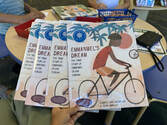
One of my favorite and most impactful picture books I enjoy using to teach my newcomers is - "Emmanuel's Dream: The True Story of Emmanuel Ofosu Yeboah" by Laurie Ann Thompson
Emmanuel Ofosu Yeboah's inspiring true story and the fantastic illustrations in the book are a great tool to not only teach English as a second language but also encourage our students to embrace who they are and believe in their abilities and potential. The first thing I did was check with my public library to see how many books were available to check them out and use in our class. Eventually, I'll buy my own class set!!!
I LOVE highlighting and posting on Twitter and Instagram my students' work. Just like they are proud of their work, I'm proud of it too. So, last week, right after posting about my newcomers' fantastic writing, I received a question from a follower. She asked: "How are you able to get newcomers to produce that much written language? I am super curious!"
This question surprised me because I've worked with newcomers for years, and I don't have a problem getting my newcomers to produce written work - unless, the student is a SLIFE (students with limited formal education). -- But even like that, I've figured out ways for newcomers to produce written work that demonstrates their learning...see this lesson here. Anyway, I thought I'd share here how my newcomers' written work was scaffolded so they demonstrate their full potential. Picture Book Project
In my opinion, picture books are the best text we could use with newcomers that will provide the understanding and the language they need to be able to retell the story.
I started by sharing with my newcomers a list of guiding questions we were to use to help us understand and retell the story.
How much do you appreciate literacy? How do you encourage literacy in your family or with students? How do you demonstrate your love and passion for literacy?
These are questions that I would have not been able to answer during the first 15 years of my life. I attended school while living in Guatemala but I didn't appreciate how much the literacy I was learning in my home country was going to be the core and foundation to everything I have accomplished here in the USA. Read more about my journey here! From the year I started working as a teacher assistant in 2004 to today -- Literacy has been something I've learned to embrace and enjoy. The foundations of the English language I learned sitting in a first-grade classroom as a teacher's assistance helped me understand how language works to make sense of words and use them to comprehend text and to write our own story. As a friend, parent, teacher, sister, and aunt, I'm always looking for ways to encourage young children to read and write. One way I do this is by celebrating literacy on days that are nationally or internationally recognized - For example, there is National Multicultural Books Day (1/29), World Read Aloud (2/3), Library Lovers Day (2/14), National Write Your Story Day (3/14), Childre's Book Day (4/2), Día de los libros (4/30), National Book Lovers Day (8/9), National Read a Book Day (9/6), International Literacy Day (9/9), I Love to Write Day (11/15), etc!! That's why tomorrow, September 8th, 2021 we are celebrating literacy in our English as a Second language classroom.
I had two class meeting days left with our newcomers, and I wanted to do something productive. As an English as a Second Language (ESL) teacher, when I think of rich lessons, I think of activities that will make my students think critically, move around, use all language domains (speaking, listening, reading, and writing), and learn!
At first, I thought about showing movie clips about mystery or suspense movies. I could have had them identify story elements like characters, settings, problems, solutions, and describing the plot - which is what we did using text. But, I didn't want my newcomers to get the idea that I wanted them to watch movies as we end our school year. I also didn't want my colleges to see my newcomers watching movies instead of doing productive work. So, what better than End-of-School Year reflection questions?!? Most of my students were face-to-face, but I had four student who were learning virtually. Hybrid teaching is challenging when you are trying to have an interactive and engaging lesson. But, technology comes to the rescue in times like this! I've taught my newcomers how to use google slides, Jamboard, and how to navigate our course Canvas page.
For the most part, I agree when people say - "don't reinvent the wheel..." - Not reinventing the wheel has saved me so much time. I've learned a lot from other educators. However, when it comes to working with newcomers, you can't just use the wheels you find -- somehow, you must reinvent it to make it fit with the group of students you're teaching. You know - personalizing your lesson for a better outcome.
So, if I wanted my students to answers great end-of-year reflection questions, I quickly began searching for what other educators have created. These were the two web pages I found useful to do what I needed.
I created a google slides presentation so it'd look presentable and colorful. Each slide had a question in big font to emphasize its importance. You can access the slides below!
Two reasons why google slides are useful with this activity:
My face-to-face students received colorful sticky-note pads to answer each question.They placed their answers on a chart paper that had all the questions. My virtual students received a link to a Jamboard where they answered on a sticky note for each question. Here is the Jamboard if you'd like to make a copy and use it with your students.
Students were all engaged. Not only were the questions open-ended so they could share their thoughts openly, but it created a stress-free time for students to share their voices.
Several of their answers will serve to make some adjustments as the support they need for the next school year. A great educator should ALWAYS make room for improvements - especially when students are giving feedback. I also learned a few new things about each student - especially the two newcomers who had only been with us for a week or two. The activity outcome made me happy. I almost cried when I saw a few of them mentioning me in their answers. Needless to say, we wrapped our last day with a group picture and selfies. See pictures HERE. What feels like the end
Thank you for reading!
As our newcomers' course comes to an end, I began thinking of ways to make time and space for students to demonstrate their full potential. One way students, regardless of their English proficiency, can be by creating something to demonstrate their ability to put together all the skills and elements we've learned for several weeks. When I think about students creating something, the first resource & platform that comes to mind is WriteReader. I've used WriteReader for years. I've used it with elementary students and now with high school students. It's a student-friendly platform and easy to use for teachers. Once you create your teacher account, you add students to your class list. So, as a culminating course project, my newcomers were to write their own mystery/suspense story after reading a couple of stories from Saddleback - To read about the lessons that lead to this final project. You can read blog post #1 HERE and blog post #2 HERE. Lesson #3 - End-of-Course ProjectThe idea for this project was to provide an opportunity for students to show understanding of the story elements we had learned over several lessons. Elements such as characters, settings, problems, solutions, character development, and plot. These elements may seem like a simple list for students to learn, but the key here is to use the elements in English. To be able to understand and respond using the English language. I didn't want to overwhelm my students with so many instructions and/or rubrics for this project; though I believe a rubric would've been great to hold them accountable with all the required elements. Instead, I gave students a list of elements to include in their story. All the elements listed were items we had analyzed in previously read stories, so I knew they would have not struggled to understand and following the list. Click HERE for a copy of the elements checklist for students' story Each student received a copy of the checklist to use as self-check for what they needed to include in their story. I showed students my own suspense story and highlighted every element in the checklist. Because the platform is student-friendly, it didn't take long to show them and explain how to create their book. Several students shared their excitement to invent their own stories. Some talked about writing a suspense story based on a personal event. I thought this idea was fantastic. Using funds of knowledge is a great thing in our classrooms. It's just what we want our students to do - to use background and personal experiences to demonstrate their full potential. Publishing Our Stories: It didn't take long for students to begin writing their stories. I even had a student complete her story in 24 hours! The day our project was due, I read aloud each story. As I finished reading each of their stories, I complimented them and praised them for their hard work. We went through each student's checklist to ensure they had all the required elements. It was so much fun reading their stories. If you'd like to read their mystery/suspense stories, please do so and share your thoughts. Yocnaly's story: Amelia's Last Night Yaquelin: What's Behind that Door Abi: The Cabin Citlali: What's in that Room Guadalupe: What Happened to Everyone Luis: The Mysterious Parota Dixon: Mente Yousef: Missing Money Samantha: Abigail's Reality Leslie: Mikey's Graduation Athalia: Fear in the Dream Students were encouraged to use an electronic translator or write in their home language. As I read each story, I provided feedback edit ideas. All students published their work in English. I even had a couple of students whose stories were so long - They shared with me how excited they were about publishing their own stories and that once they started writing, they couldn't stop.
It was amazing to see how into writing they all were. Even my virtual students were super engaged! I appreciate platforms like WriteReader that allow students to discover their love for reading and writing. I also love having books like Saddleback books that not only helped developed my students' reading skills. Have you used any of these resources? If so, share with me how you've used it. I'd love to add tools to my toolbox. I cannot wait to show these books to my students next school year. I'm so proud of their hard work. Thank you for reading! I was thrilled to see how well our newcomers did while learning character development. But more so, I was excited to hear how much they enjoyed reading the stories and how well they understood them. I have so much faith in the hard work Saddleback puts into each and every book that makes it to our classrooms. I enjoy using these books to teach our newcomers. This blog post is a continuation of a previous post - to read about lesson #1, click HERE. Lesson #2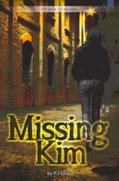
After our prediction, I read the story out loud while students followed along and tracking the text. There were some comprehension checks while reading just to make sure students were following along. After reading the story we identified a list of characters and settings and used this list to create complete sentences - Our sentences were simple but they were able to create them themselves and read aloud on their own. See Jamboard slides 7-11 to see students' independent work. Comparing and contrasting stories: To teach the concept and the language of compare and contrast, I used this image of an orange and an apple. Students were able to tell me how these two items compare (similar/same) & how these items contrast (different/not the same) - It was a fun activity and students were engaged blurting out answers. Once students understood the concept of comparing and contrasting, we were ready to begin tackling our stories. I began by showing students the stories side by side just like the fruits in the example above and shared one similarity and one difference between the stories. We made sure that anything we added was found in the text and not just our inferences. Once I modeled, I let students help me out by sharing one more similarity and difference. This gave an idea of their understanding of the assignment. See students' independent work completed on pages 14th - 19th. To see the entire Jamboard, click HERE. This activity gave me a good idea of their text comprehension. By providing text evidence and placing them in the correct box, I can tell that comprehension took place therefore language acquisition happened too!
Be sure to check our next lesson when we create our own stories using the elements we learned in these two stories we read. If you have a different way to teach compare and contrast, please, share it in the comments. I'd love to learn from you and add tools to my toolbox. Click HERE to read Part 3 Thank you for reading! |
Categories
All
Archives
May 2024
|

